Author
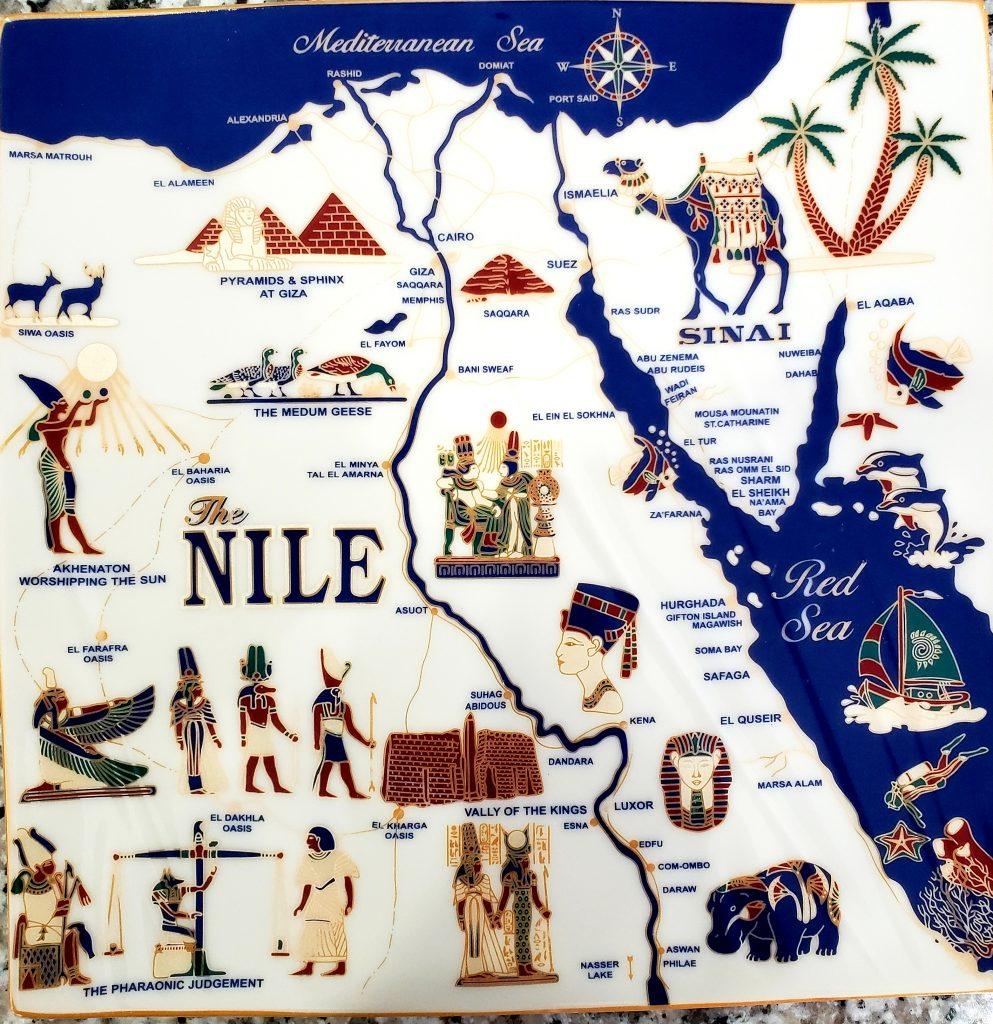
We reached Cairo early morning around 6.15 am and were welcomed to the “Land of Pharaohs” by our guide from Egypt Tours Portal. The airport formalities were very swiftly completed as we had our e-visas. A representative from our private tour company was waiting to assist us with the passport control formalities.
2 points to remember –
- The currency exchange rate at the airport is not good, so change your CAD in the city.
- The phone plans at the airport are expensive but it may still be worth buying a SIM card there to save time.
It took us about 15 minutes to come out as we didn’t have any check-in baggage, where we met our Egyptologist guide. At first I was skeptical about the ‘egyptologist’ part, but as the day progressed I realised that our guide was extremely knowledgeable about every place we visited and deserving of the title. We had some great discussions on history from 3500 BC to present delving into long discussions on how things had / must have happened, the rise and fall of empires, the culture, religion and politics. I am happy to give his contact information below and recommend that you contact him for your tour of Cairo.
Mohamed Heider, 00201003353405; M2hedar@hotmail.com
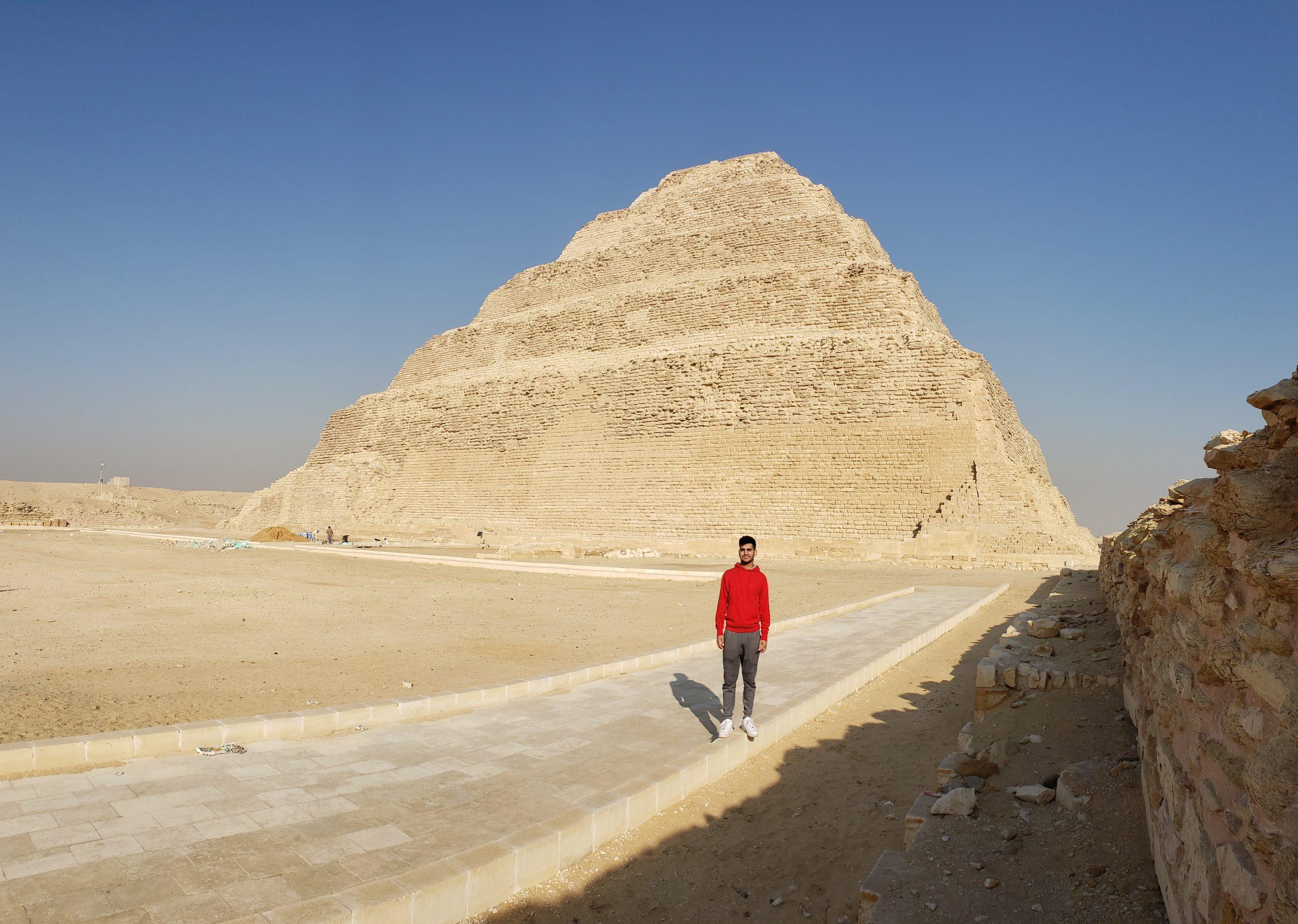
From the airport we drove straight to the remarkable Memphis City which was the first capital for ancient Egypt that was founded by the great King Menes and occupied a strategic position between Upper & Lower Egypt. The city was believed to be under the protection of God Ptah. Here you will see the beautiful statue of King Ramses II which is partially broken but has maintained its beautiful sculpting. There are other statues which date back 3000 years.
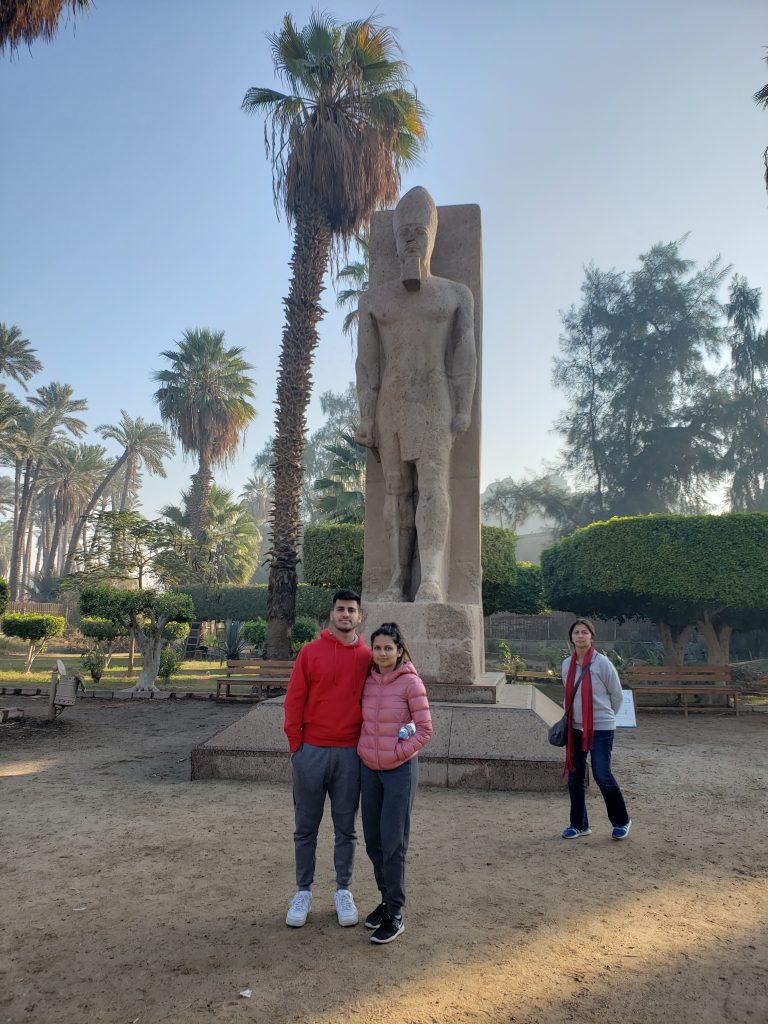
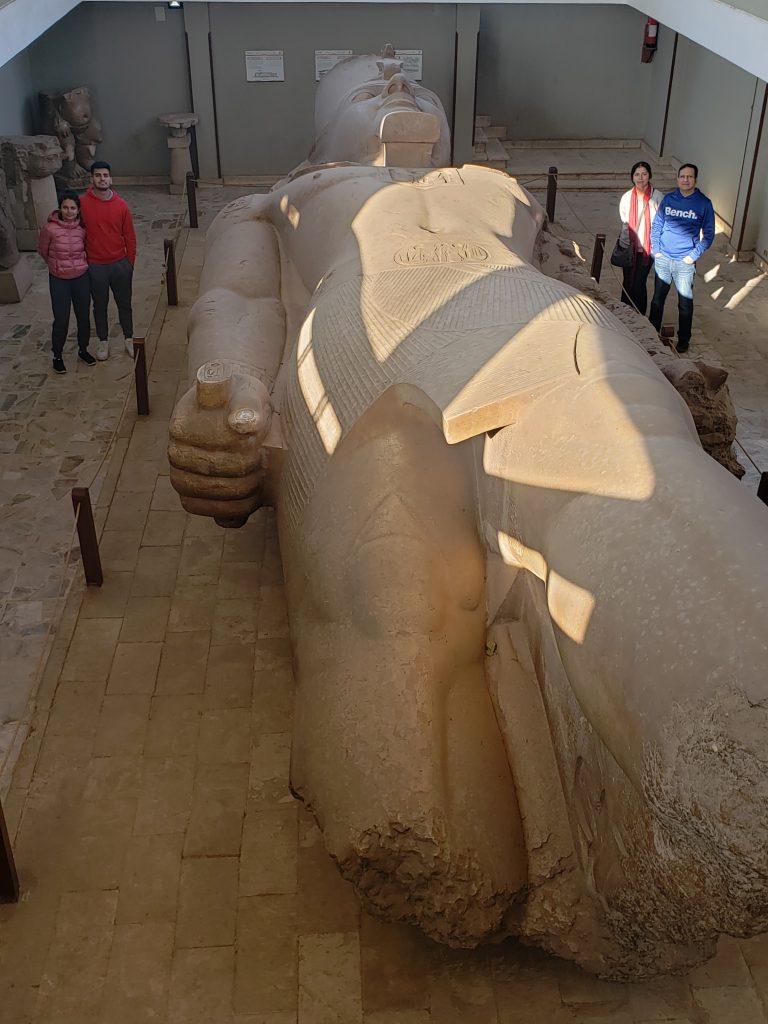
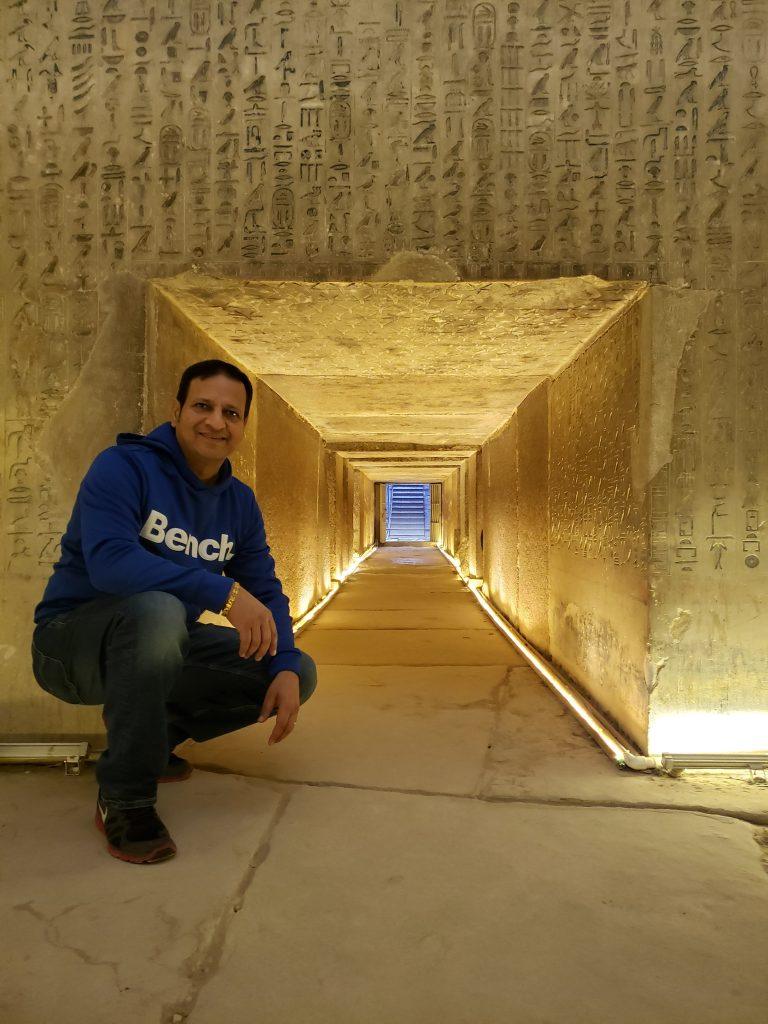
We had one of our most enjoyable breakfasts here, from a roadside shop selling felafels and fried eggplant. Our guide Mohamed did his best to dissuade us as he felt we may not like it, but we insisted and it was a good decision.
From Memphis we drove to visit the magnificent Saqqara Step Pyramid that is considered the earliest large-scale cut stone construction that was built during the 27th century B.C during under the reign of King Djoser. It was mainly built to be a tomb for the pharaoh but the builders wanted to give it a unique shape rather than just a “mastaba” (the square base) so they kept building a mastaba above another until it reached 6 mastabas atop one another with a height of 62 m. This a complex of tombs, ceremonial structures and decorations and takes about an hour to tour.
In the afternoon, we visited the famed Giza Pyramids Complex, which is synonymous with Egypt!! This Complex has some of the most incredible treasures that were left by the ancient Egyptian Pharaohs starting from the 4th dynasty who ruled Egypt in 2400 B.C.
The Great Pyramid of Khufu : It is the most interesting, the oldest, and the largest pyramid in Giza Plateau that was built by the great King Khufu, the son of Snefru who wanted to start a building project in Egypt and his son came to finish it after his death. The most impressive thing is that the height of the Pyramid is 147 m and the number of stones which were used in its construction is more than 2,300,000.
Must do : Buy a ticket of 400 Egyptian pounds per person to enter the Great Pyramid and walk all the way up to the burial chamber. The walk up to the burial chamber is a steep, narrow and almost airless passageway which can be very daunting, especially if you are claustrophobic. After a long climb you have to crawl a bit to ent the tomb area which is empty, except for the lower half of the sarcophagus. Despite all this, it is quite exhilarating and it is equally exhilarating to be out of the pyramid (LOL)
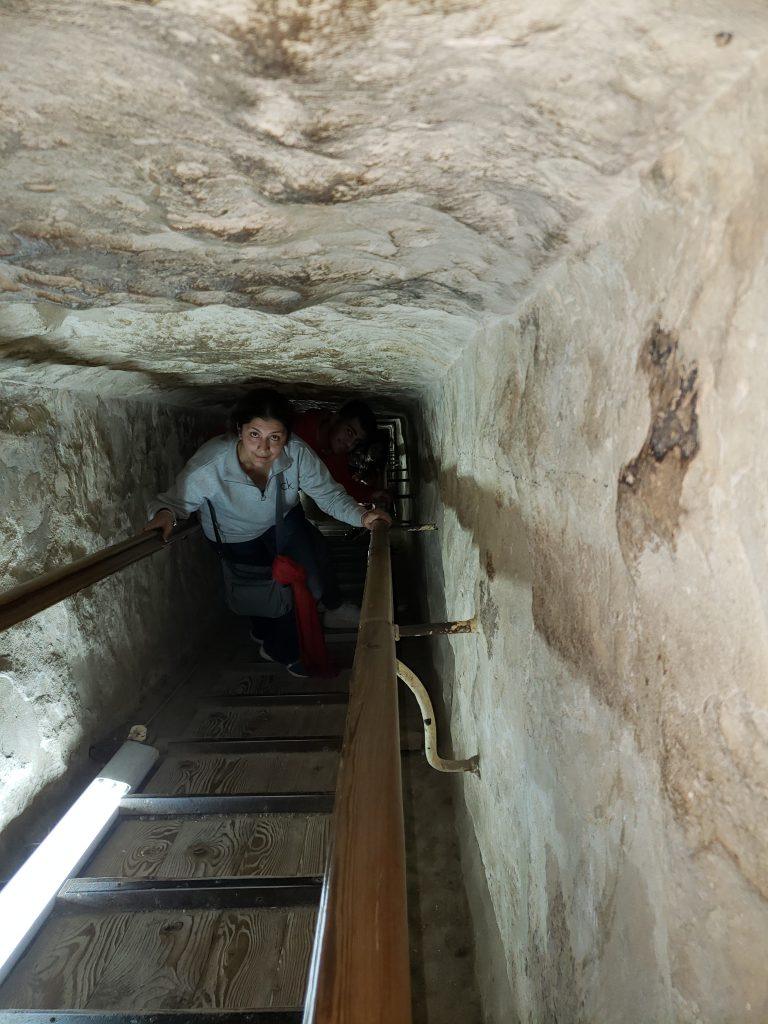
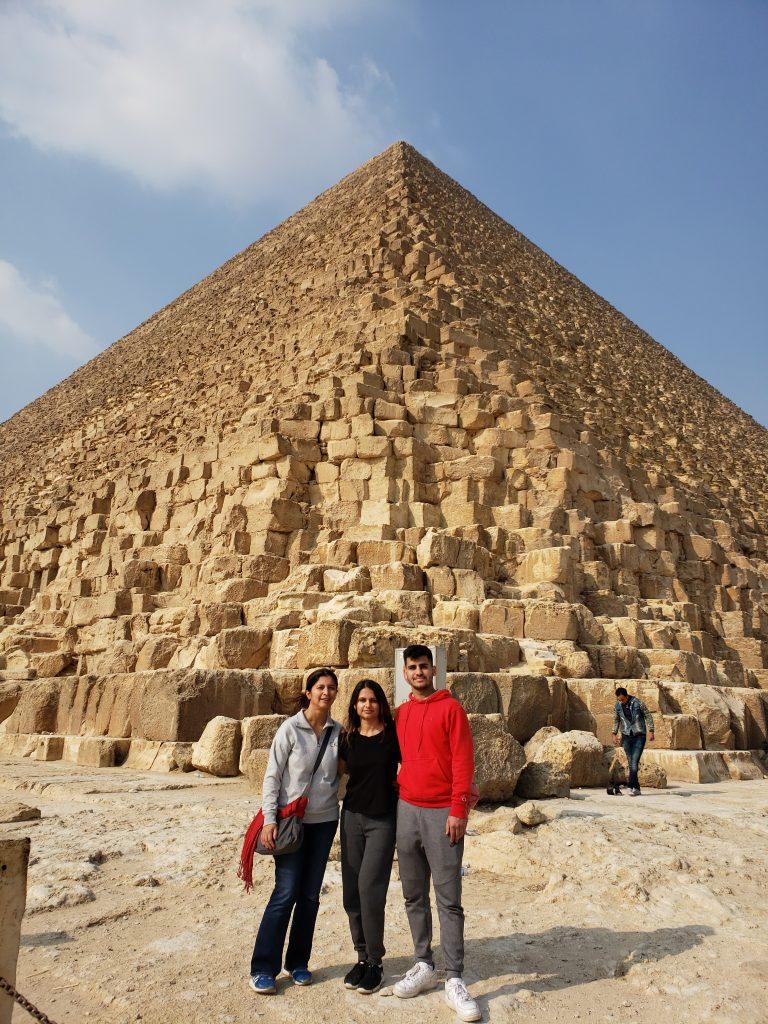
The Amazing Giza Sphinx : Built during the reign of King Khafre, the son of King Khufu,the Sphinx takes the face of the king and a body of a lion as a sign of power and stands at 73 m long, 19 m wide, and 20 m in height. Sphinx is a name from the Greek time, almost 2000 years later and there is not much information on what it was called earlier or its purpose.
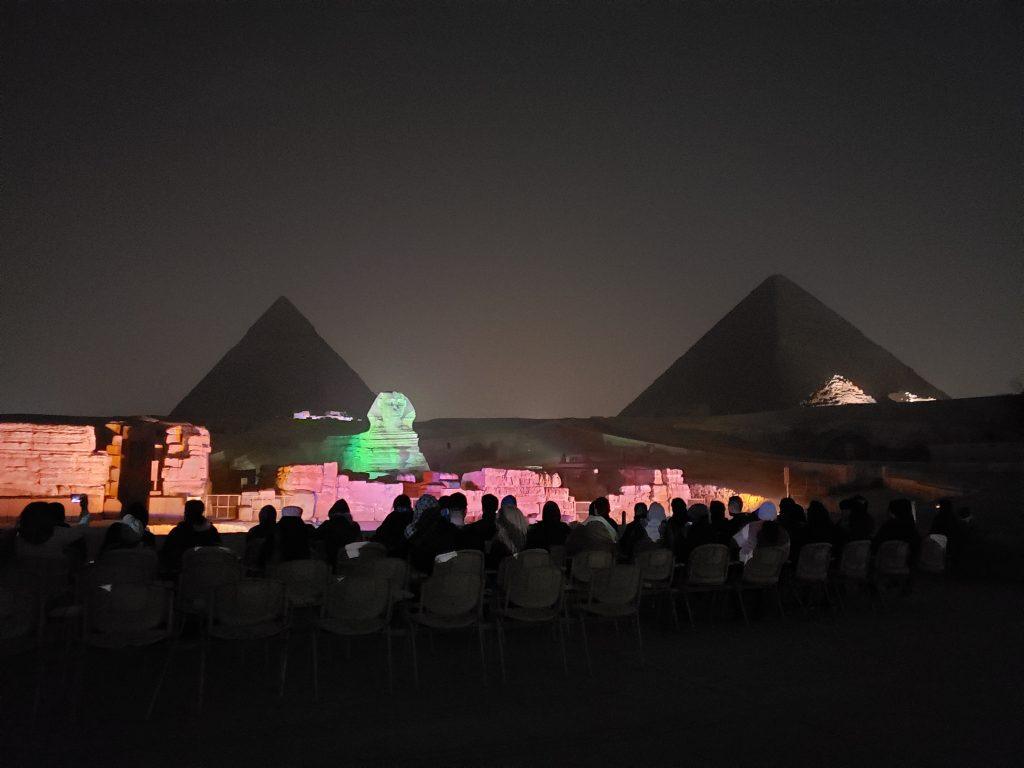
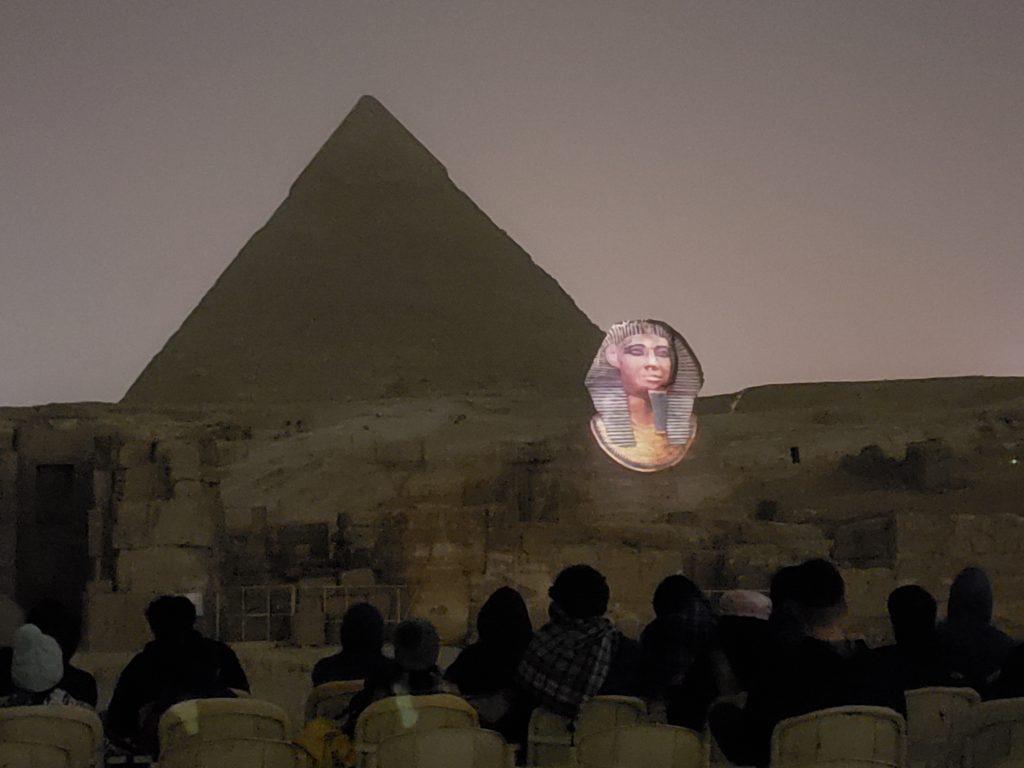
Day 2 : Dec 18th : In the morning, we took the 06:00 am flight to Aswan. The flight was comfortable and on landing, we were welcomed by our guide for Upper Egypt, Omar Khalifa. Omar was also a very well knowledgeable guide with good command on English. I would be happy to recommend him too.
Omar Khalifa, Tour guide and Egyptologist
+201006394581 ; omarlxr@yahoo.com
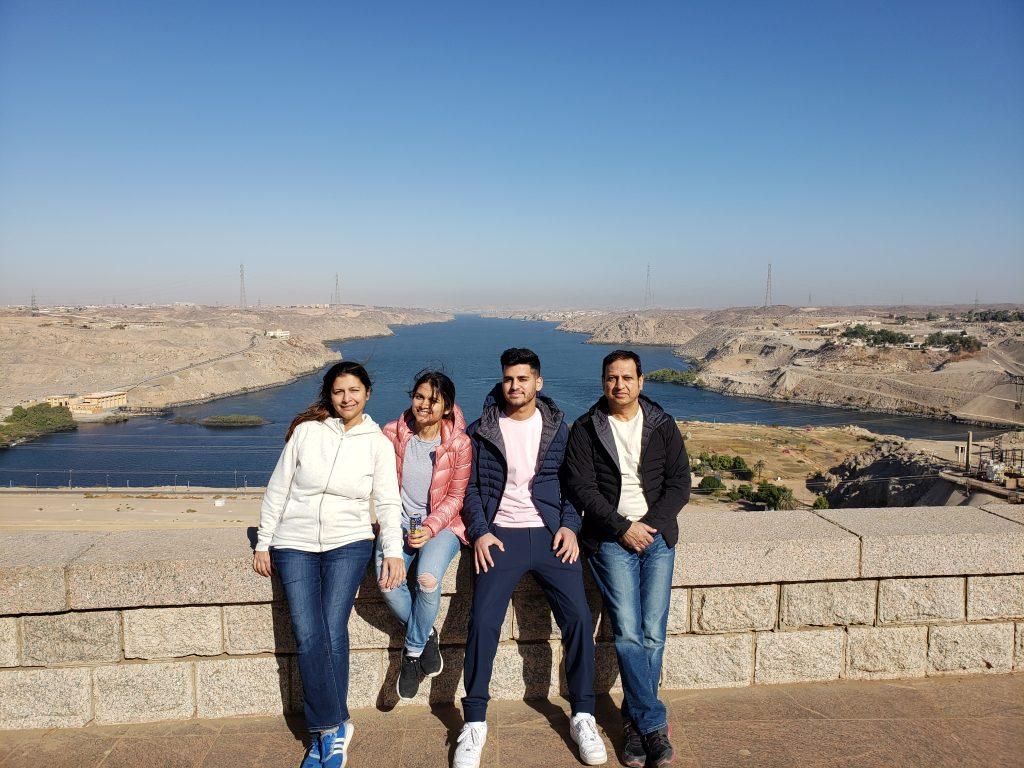
We drove straight to The High Dam, which is one of the most impressive modern achievements for the Egyptians and was built between 1960 & 1970 with the help of the UNESCO to save Aswan from the flood. It has had a profound effect on the economy & culture of Egypt. Took us about 20 min to see, enjoy the beauty and take pictures. We did not visit the museum and other paid areas.

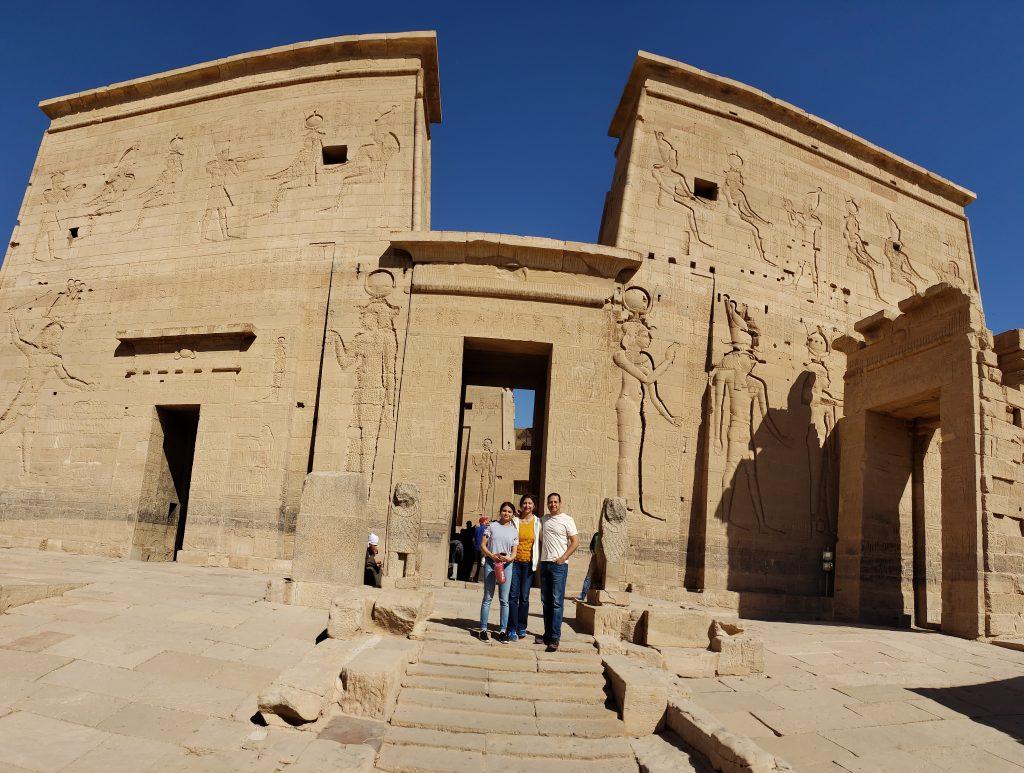
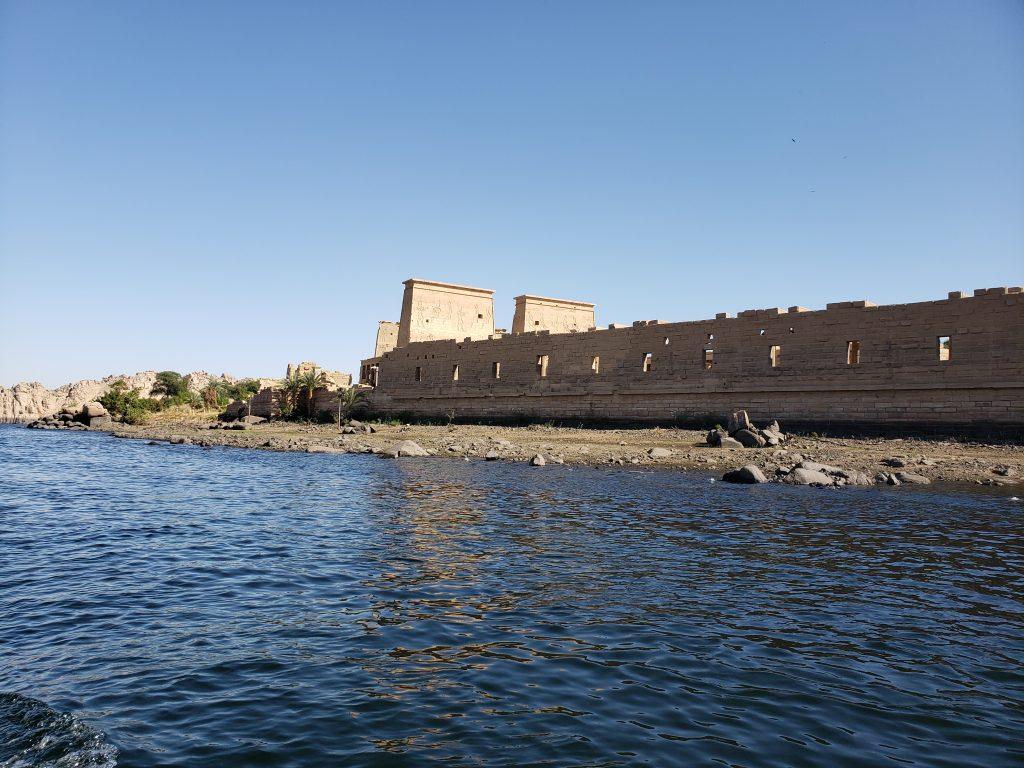
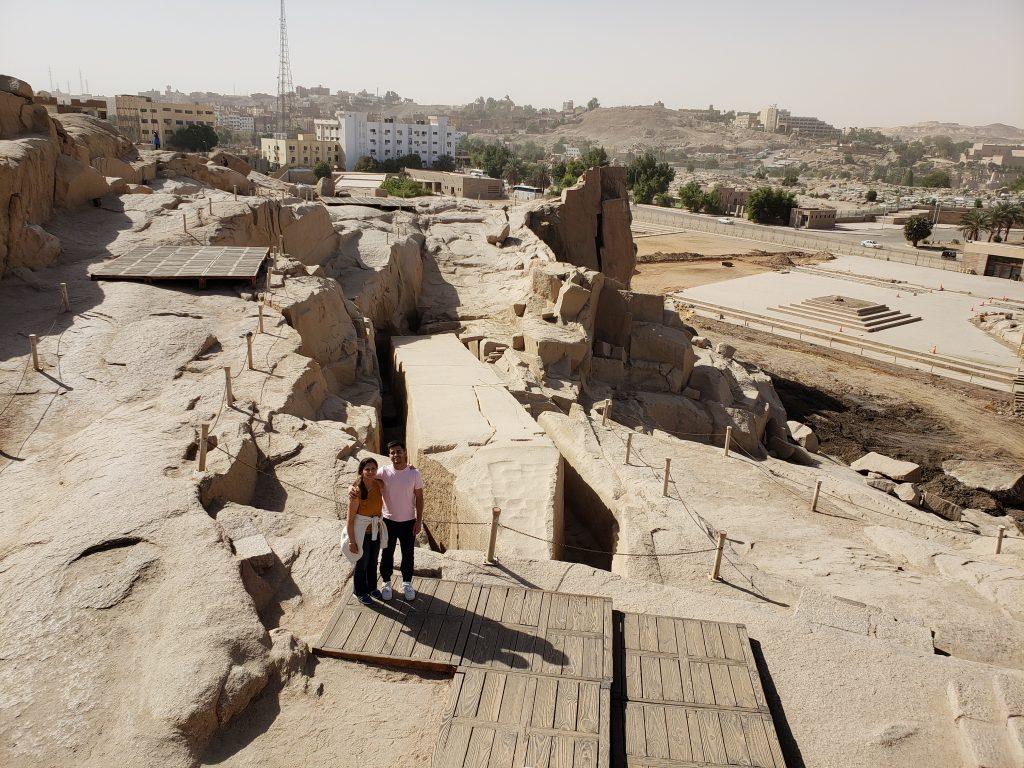
Next stop was Philae Temple, which was dedicated to goddess Isis, the goddess of love & beauty. The original location of this temple was on low lying lands and when it was discovered, was found half submerged in water. It was relocated by the UNESCO to Agilikia Island which is a feat by itself. One has to take a short 10 min boat ride to reach the temple which is very enjoyable and you also get to see the temple from different angles from the boat.
After spending an hour and half at the Philae temple, we headed for The Unfinished Obelisk. It is the largest Obelisk that was attempted but during its sculpting, a crack developed in the rock because of which it was abandoned. It was built during the reign of the amazing Queen Hatshepsut to complement the Lateran Obelisk that was originally at Karnak.It is about 137 feet “42 m” and is estimated to weigh 1,200 tons.
Around 1.30 pm or so we headed for our 5-star Nile Cruise, checked in and had a sumptuous lunch. The boat called Concerto was luxurious, the rooms were reasonably big and clean and the top deck was well equipped with a swimming pool, bar and numerous relaxing chairs to enjoy the sun.
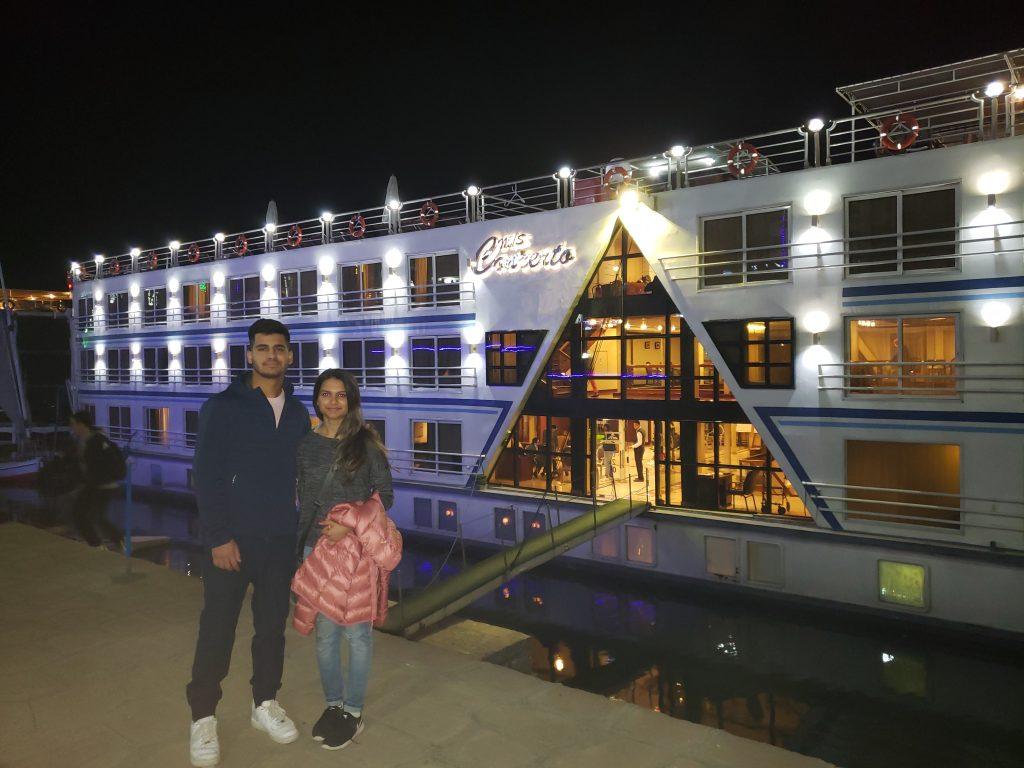
Day 3 : Dec 19th : After a good night’s rest in the ship and a hearty break fast, we decided to explore Aswan and booked a Felucca to take us to the Tombs of the Nobles, Elephantine island, Kitchener island and the Botanical garden. If you have time, you must plan this Half day trip. We were back by 1 pm as our ship was departing for Kom Ombo at 2.30 pm. The tombs of the Nobles is a good 40 – 60 min hike to see all tombs and involves climbing a hill. You can take a camel or donkey ride too. Tip the guide at the top to get access to the tombs which are are worth their cost.
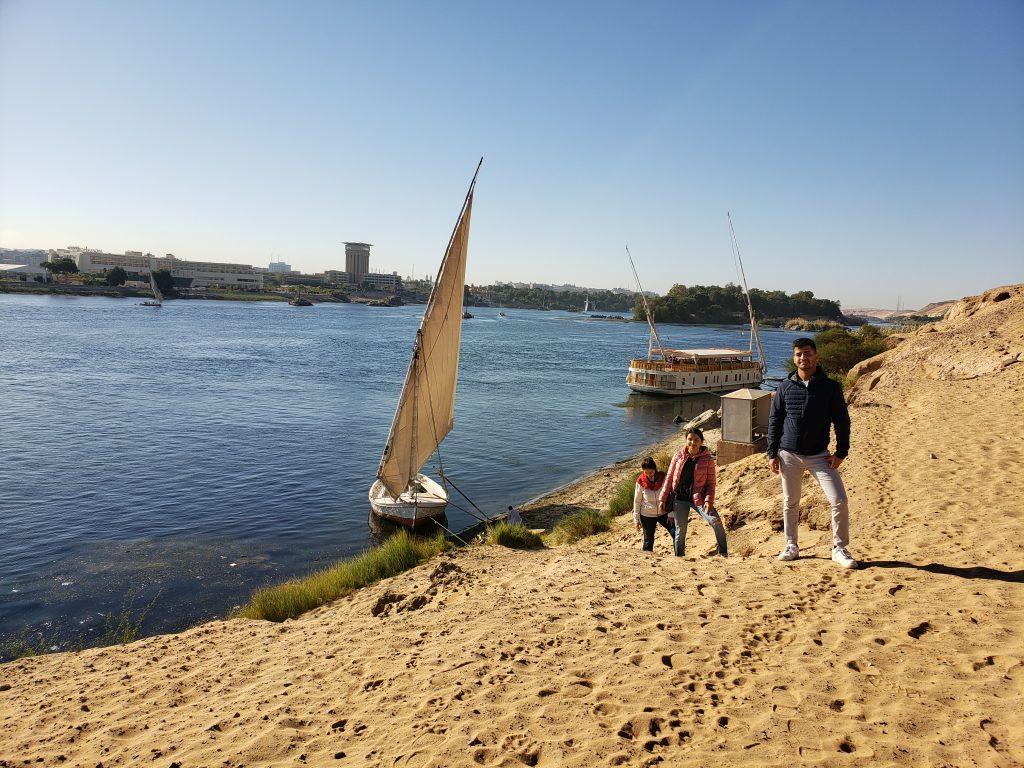

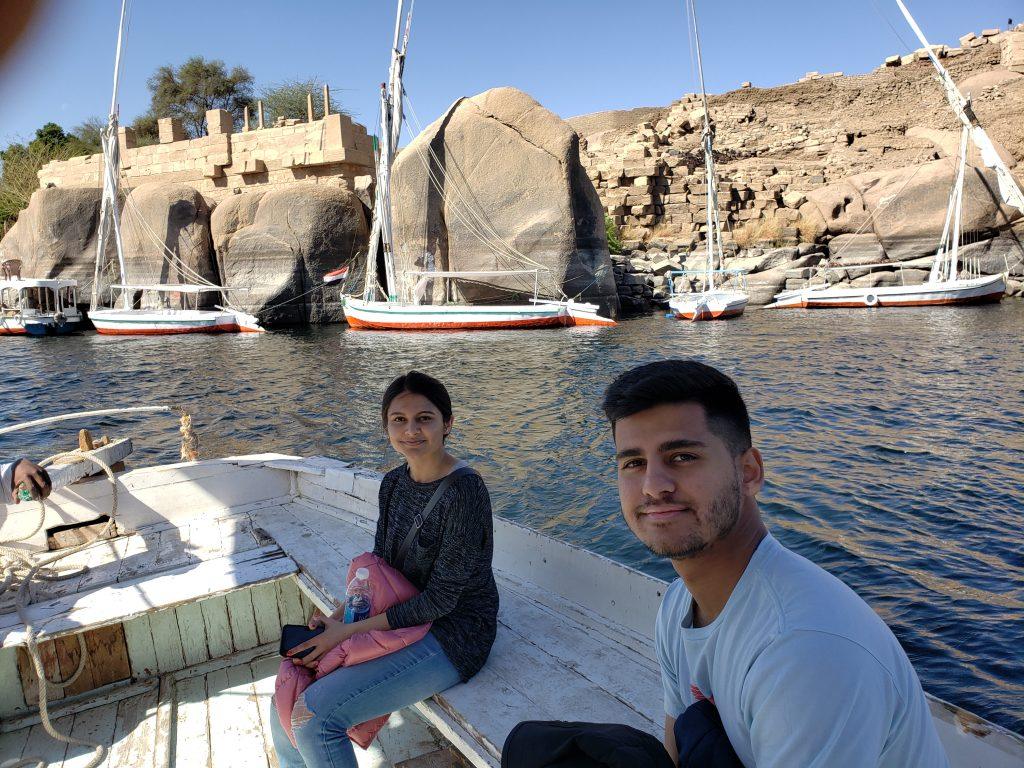
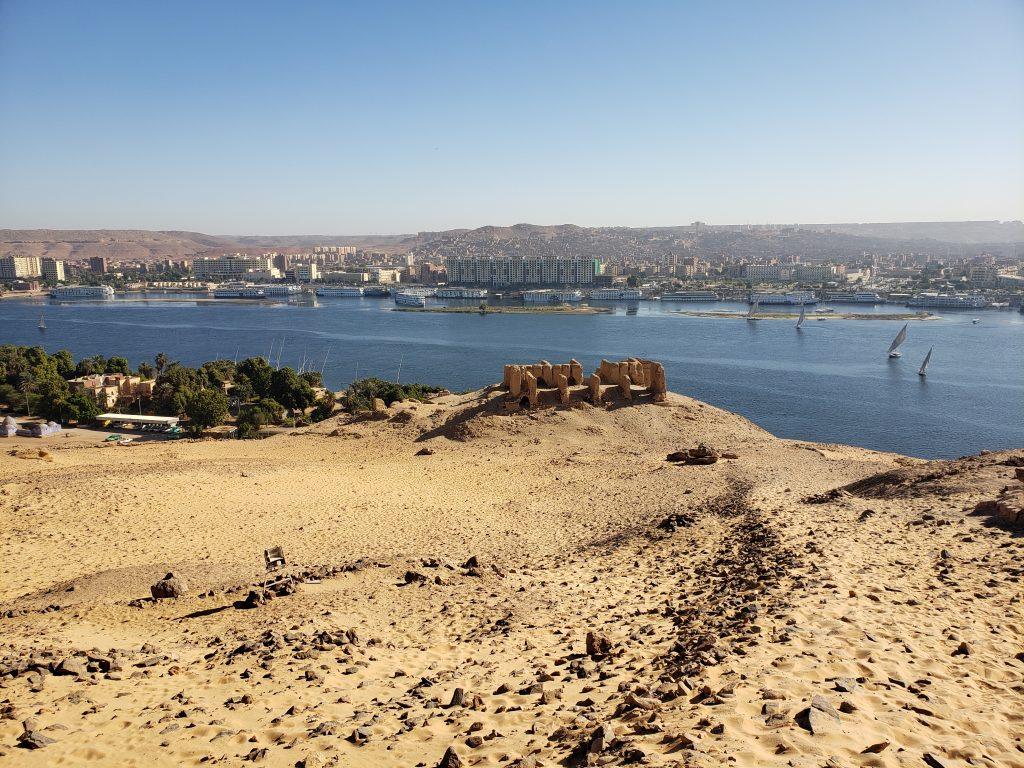
Kom Ombo Temple is an unusual double Temple dedicated to 2 Gods. Its southern half was dedicated to Sobek “The Crocodile God” and Hathor, “The God of Fertility and the creator of the world” according to the ancient Egyptian beliefs. This temple has unique drawings of the ancient Egyptian Medical Instruments & the Egyptian Calendar.
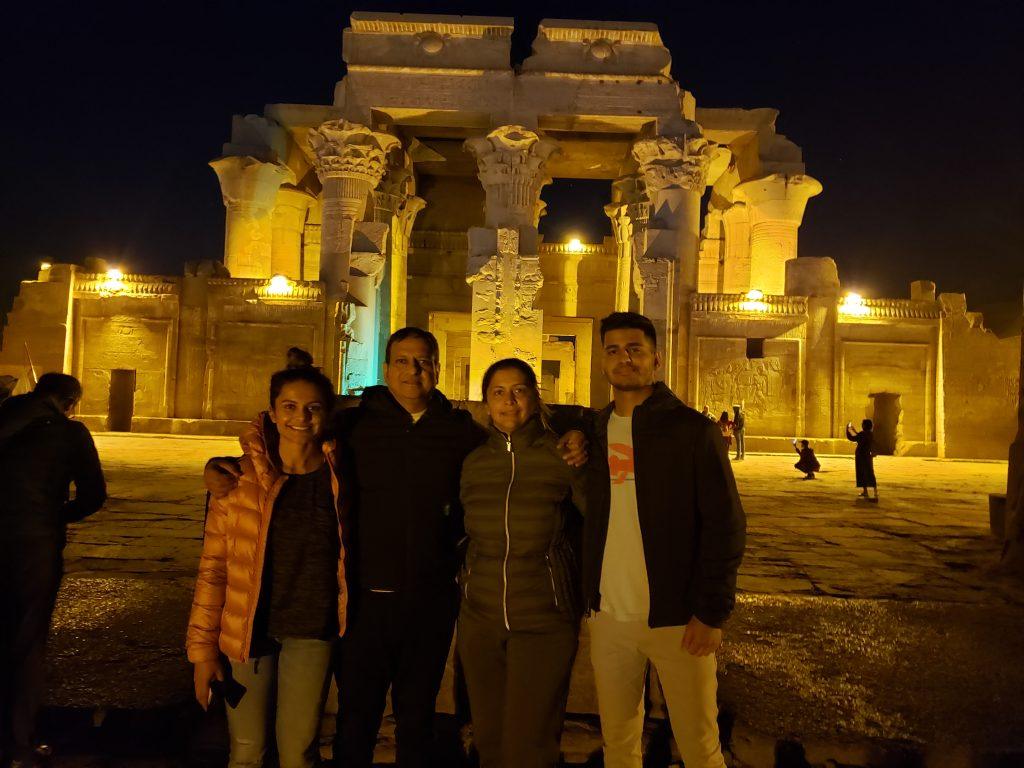
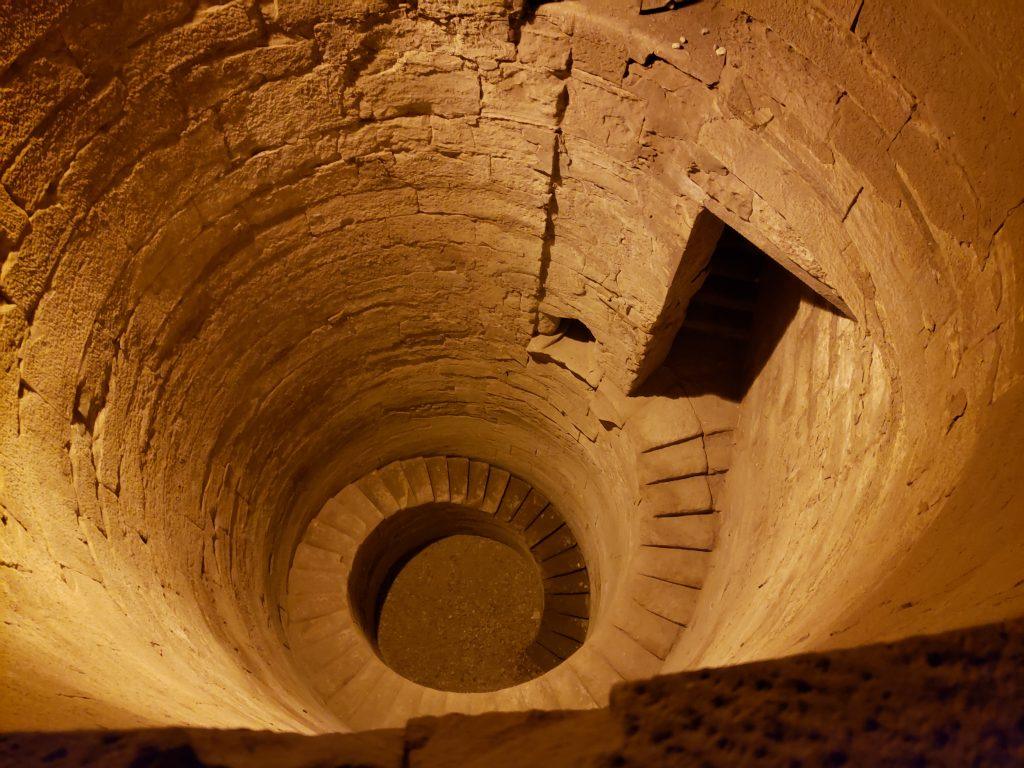


Day 4 : Dec 20th : Early morning we visited the Edfu Temple, which is dedicated to God Horus and it is considered by many, one of the most preserved Greco-Roman Temples all over Egypt that was built in the Ptolemaic Kingdom between 237 & 57 BC. The inscriptions on the Temples’ walls provide a great deal about the construction procedures that were used so make sure you look for them. We spent almost 2 hours at the temple, which was sufficient to explore the temple in detail.
To reach the temple one has to take a 10 min horse carriage ride which almost feels like a chariot race with each coachman competing with his peers to make as many rides as possible to maximize his business from the docked river cruise boats.
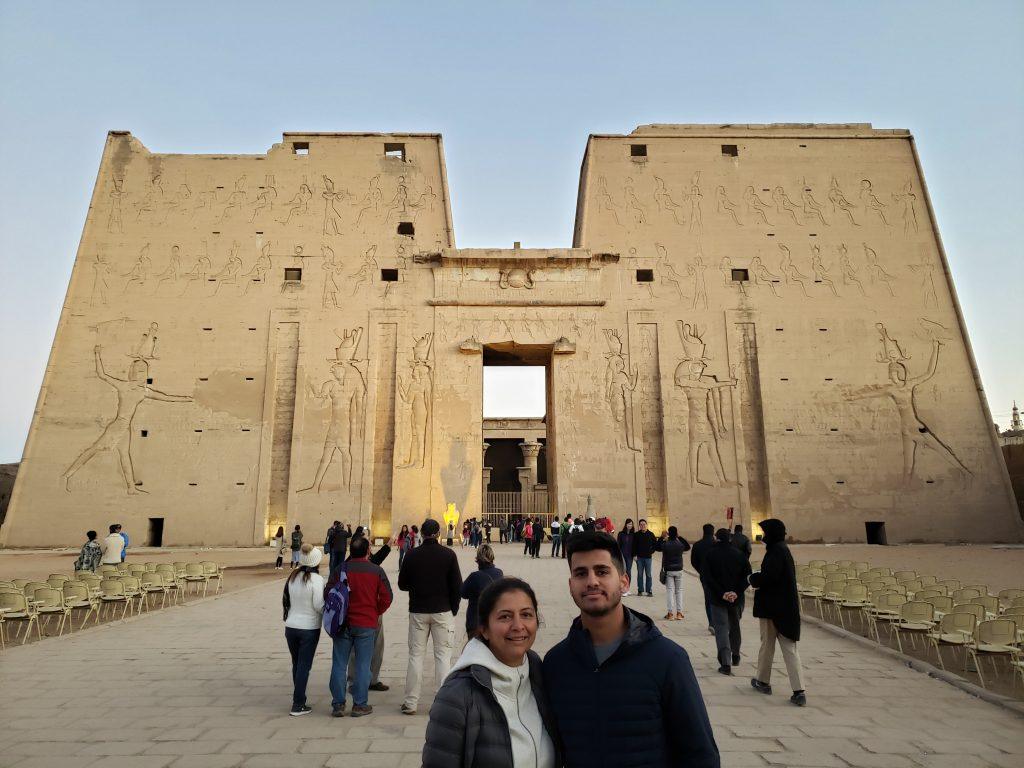
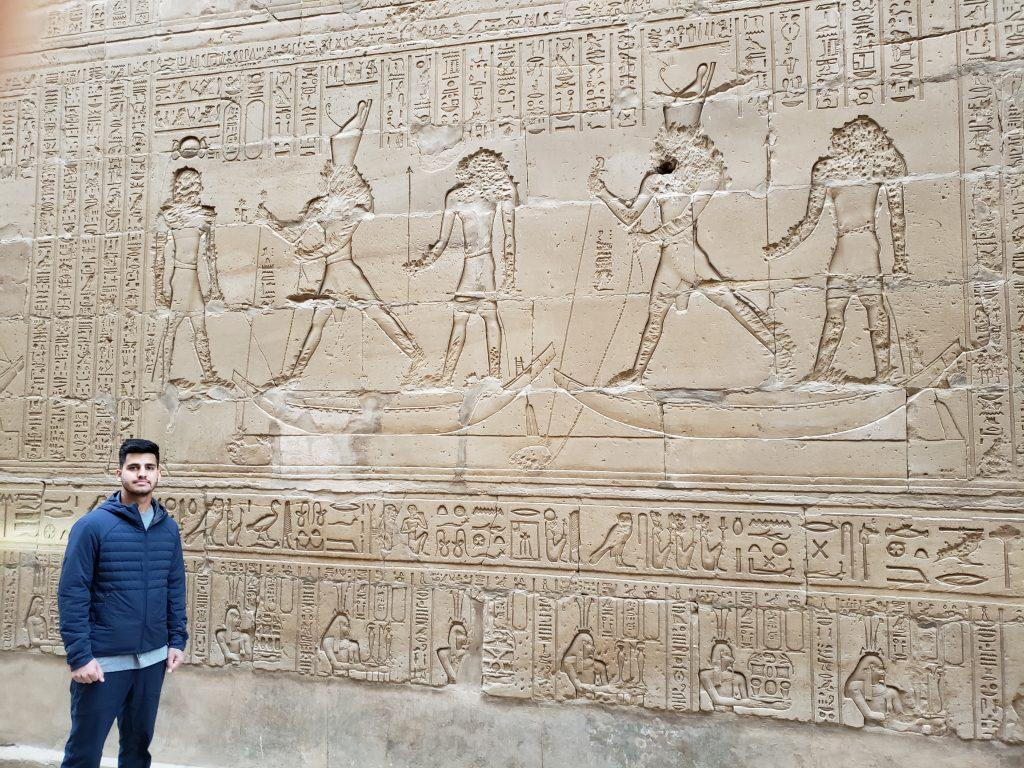
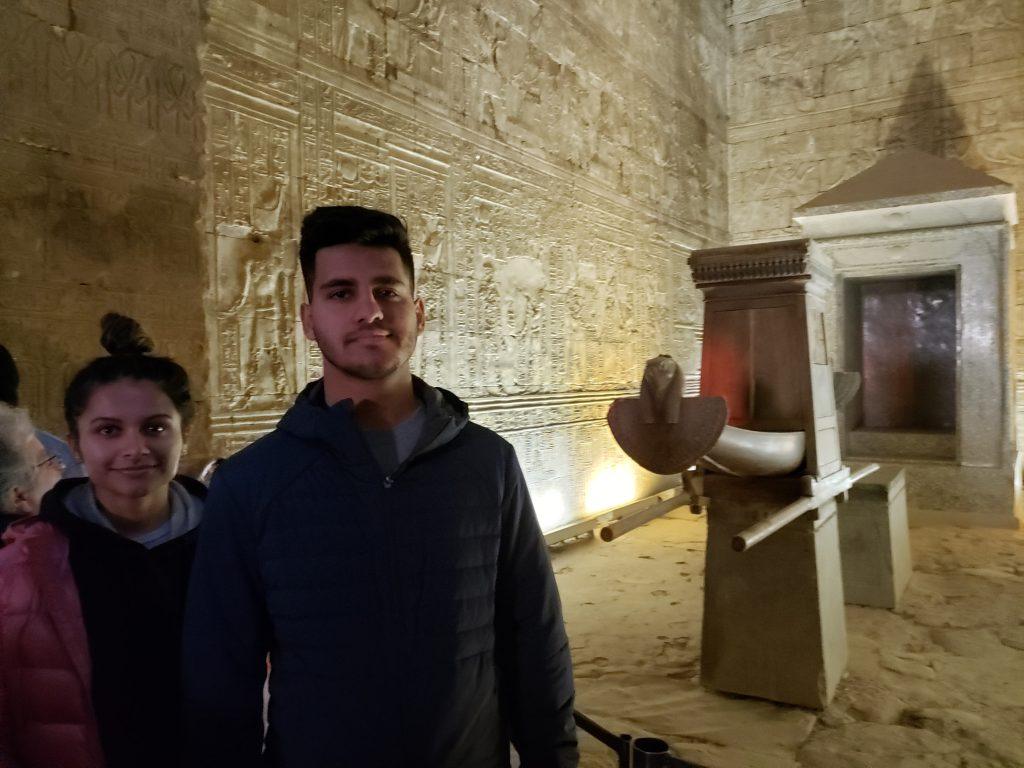
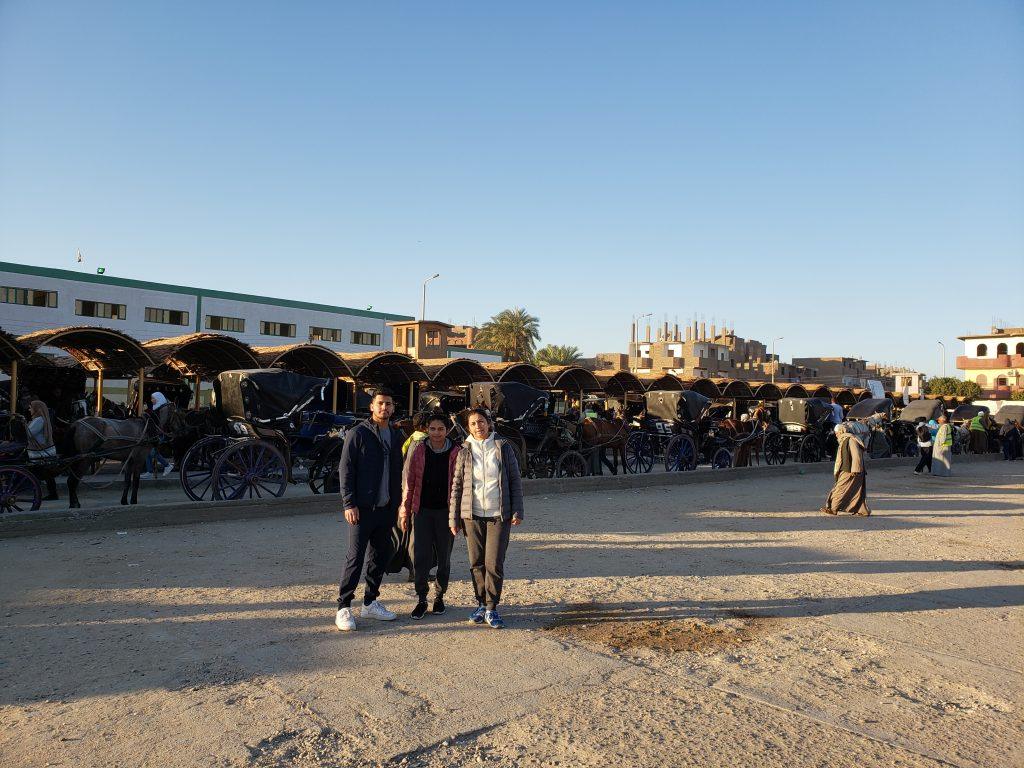
Once everyone was back on the boat we started sailing reaching Luxor in the evening. Luxor Temple is right beside the Nile river walking distance from where our boat had docked. Luxor is known for its alabaster stone so we strolled to the market.
Beware of the horse carriage guys and self proclaimed guides. They will offer to take your family around the city for 20 Egyp Pounds for all together, but later will say it was per person and that ithey were referring to British pound. It would be best to clarify the currency, total amount, total ride time, areas that would be shown, etc. Tipping is sort of mandatory everywhere in Egypt. So be ready with a lot of change.
Be careful talking to strangers as there are lot of scams. We were fooled by someone pretending to be a kitchen help in our boat. He took us to a so called ‘fixed price Government shops’ where we bought a lot of souvenirs only to discover later that the main market had everything available for half the price. Another important thing to remember is to not get into bargaining or arguments with the street hawkers. You will face a barrage of aggressive sellers but keep your cool and respectfully decline them and tell them that you will come back later.
Day 5 : Luxor : In the morning after a hearty breakfast we checked out of our cruise boat and drove to the Valley of Kings. where the pharaohs and noblemen of the new kingdom were buried. There are 62 excavated tombs, notable being those of Set 1, Rameses II, IV, VI, Tutankhamen. Not all the tombs are open everyday. The ticket will allow you entry to any 3 tombs after which you will have to buy tickets to see more tombs. The Tomb of Tutankhamen is very popular but is quite small and not very interesting. All the contents have been moved to the museum in Cairo. We explored the tombs of Seti I, Rameses IV, VI and found the tomb of Rameses IV to be the most spectacular, both in terms of sheer size as well as the intricate sculpting and painting. Plan to spend a few hours here.

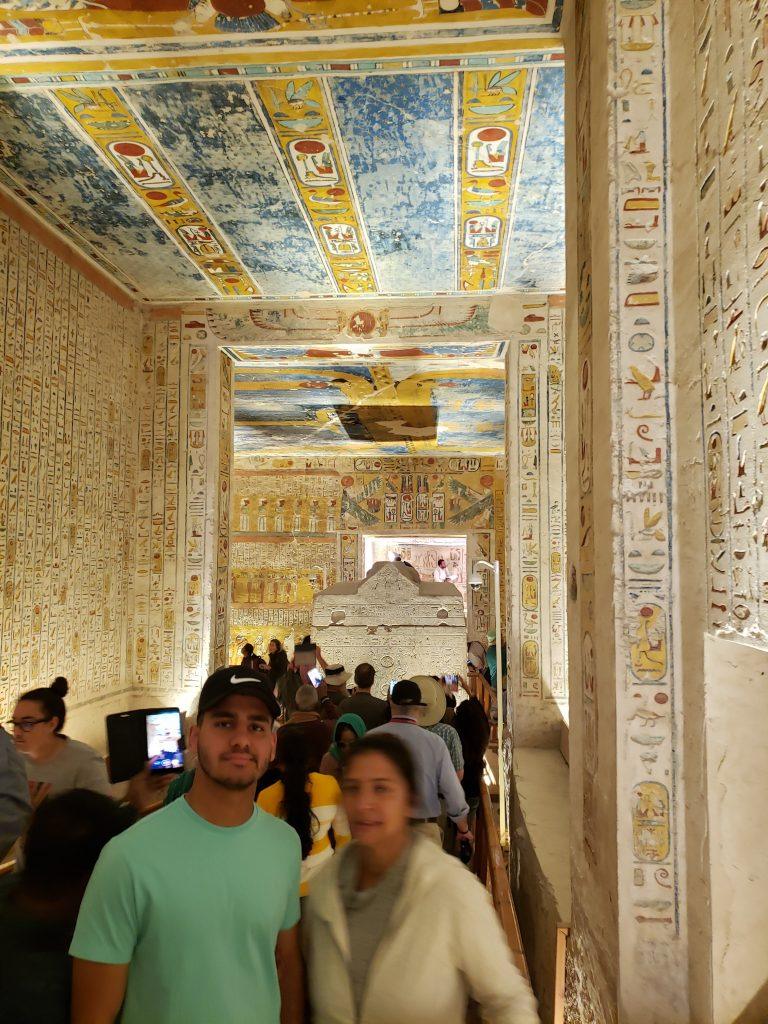
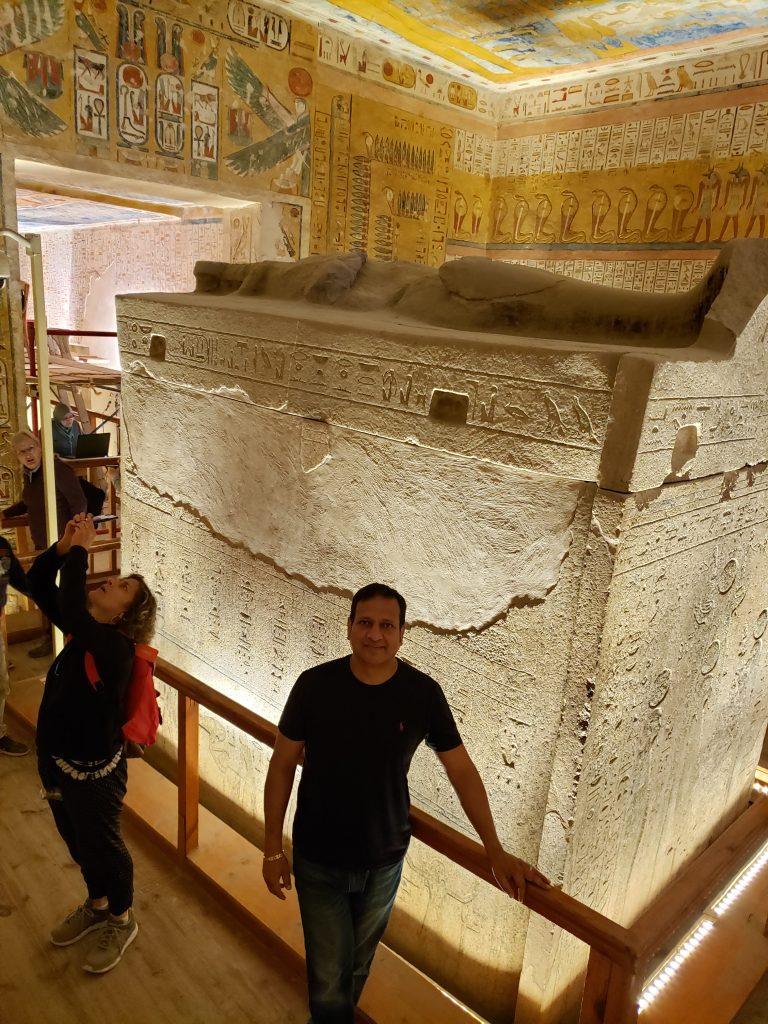
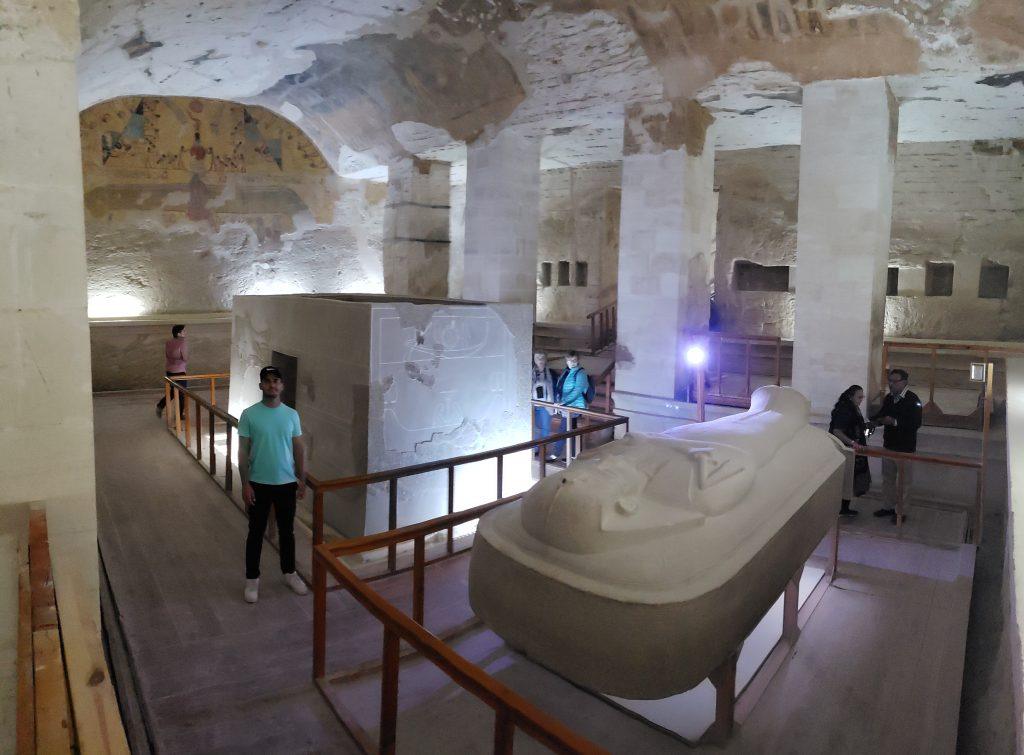
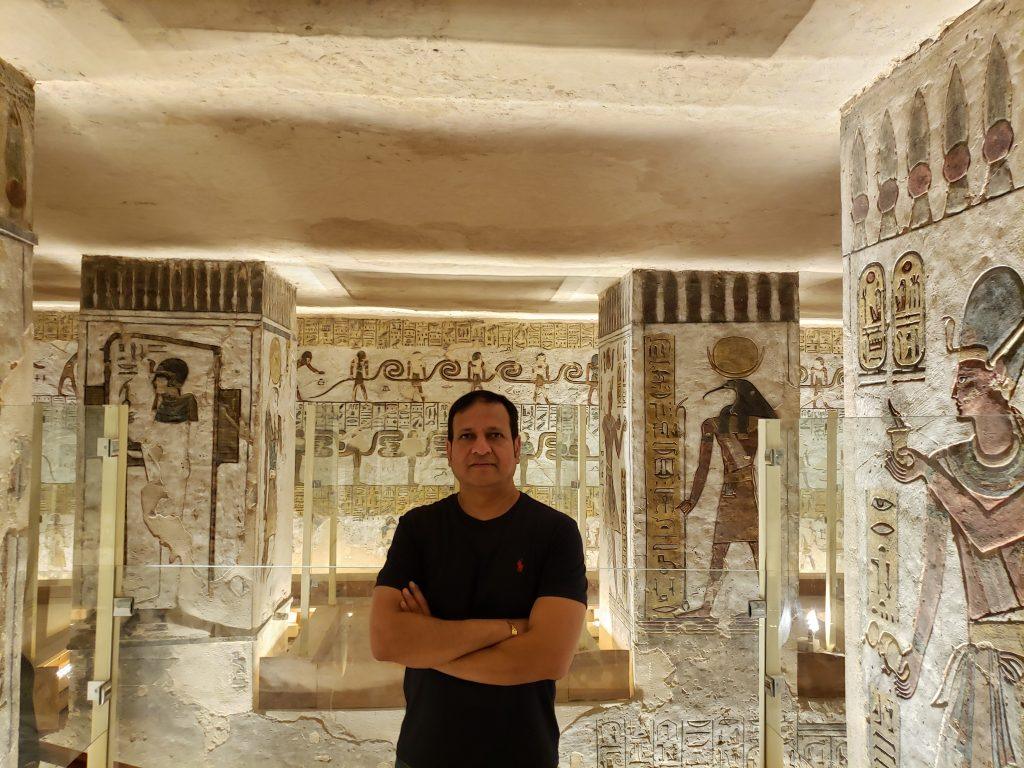
We visited the Temple of Queen Hatshepsut and the Colossi of Memnon next, both being on the west bank. The mortuary temple of Hashepsut is a grand structure which was erected by her to illustrate the elegance and grandeur of her reign. The architecture was emulated by many pharaohs that followed after her and some even claimed it as their own. Hatshepsut’s reign was one of the most prosperous and peaceful periods in Egyptian history. Pay attention to the paintings / carvings in the Birth and Punt collonades.

On the east bank of Nile are the Temples of Karnak, which I would say, were the highlight of the Luxor tour. It is city of temples built over 2000 years to the Gods Amun, Mut and Khonsu. Give yourself at least 2.5 hours to explore the massive sculpted walls, Hypostyle hall (area filled with gigantic columns supporting the roof), statues of Rameses II and others, the tall obelisks, lake inside and much more. Don’t miss the –
- Remains of the mud-brick ramp used in the construction of the First Pylon that tells us how these massive structures were erected
- the Magical Scarab Beetle Wishing Statue that is said to grant wishes if you go around it 9 or 11 times (in the lighter vein, please don’t hold the author responsible if it doesn’t work)

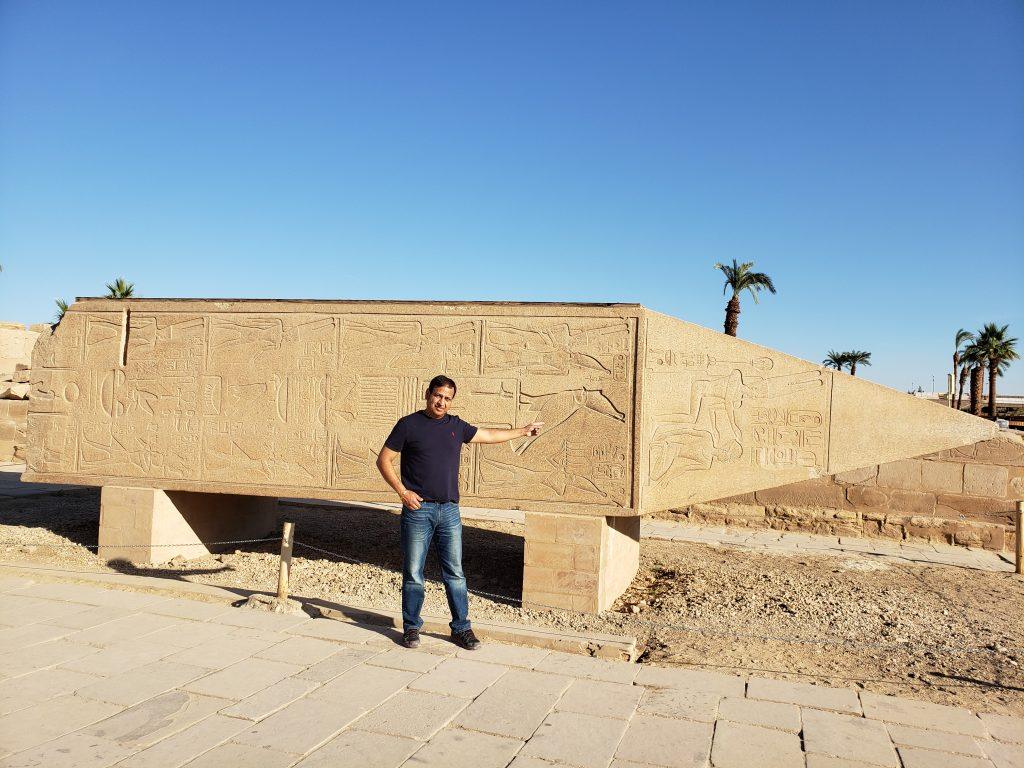
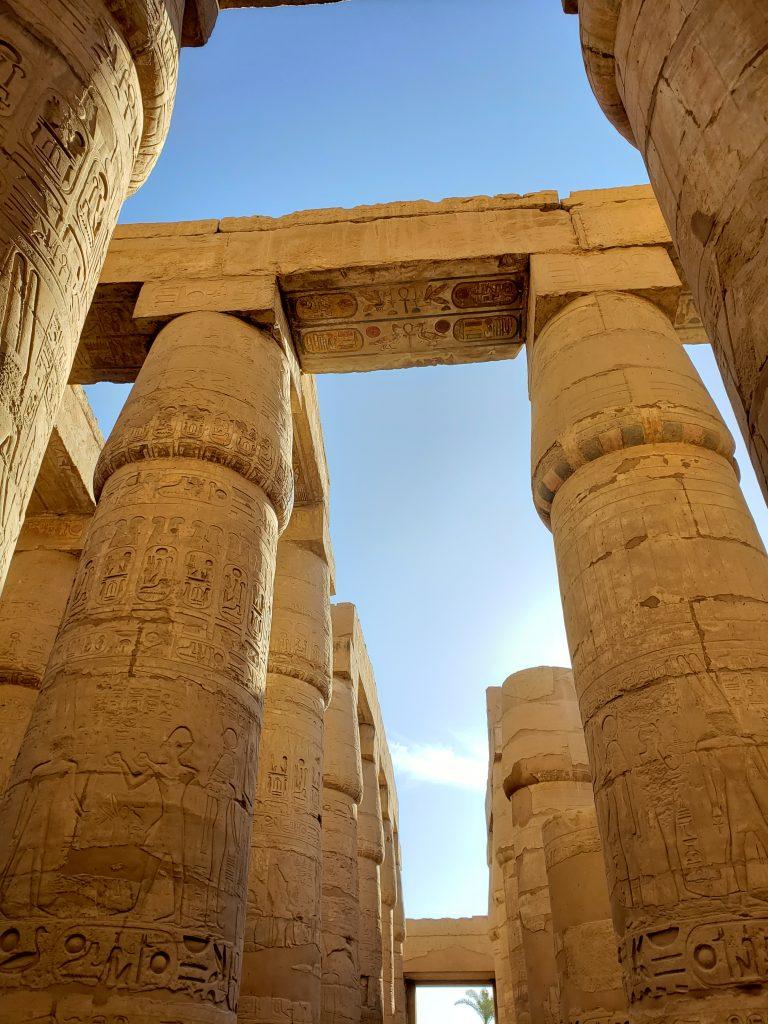
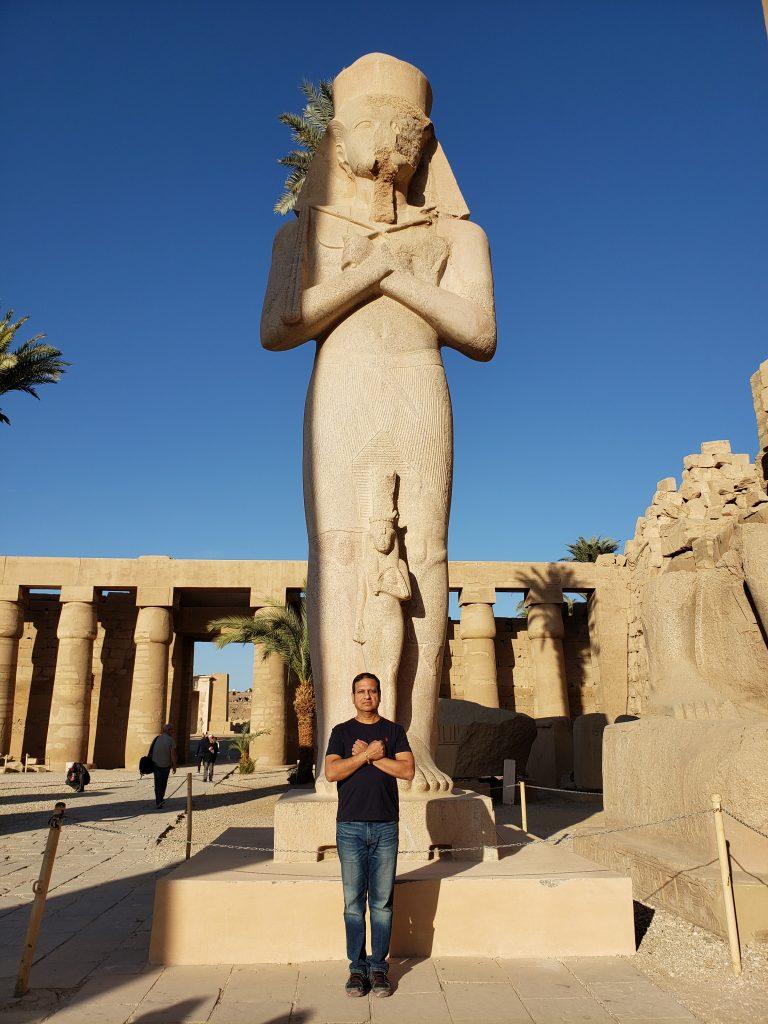
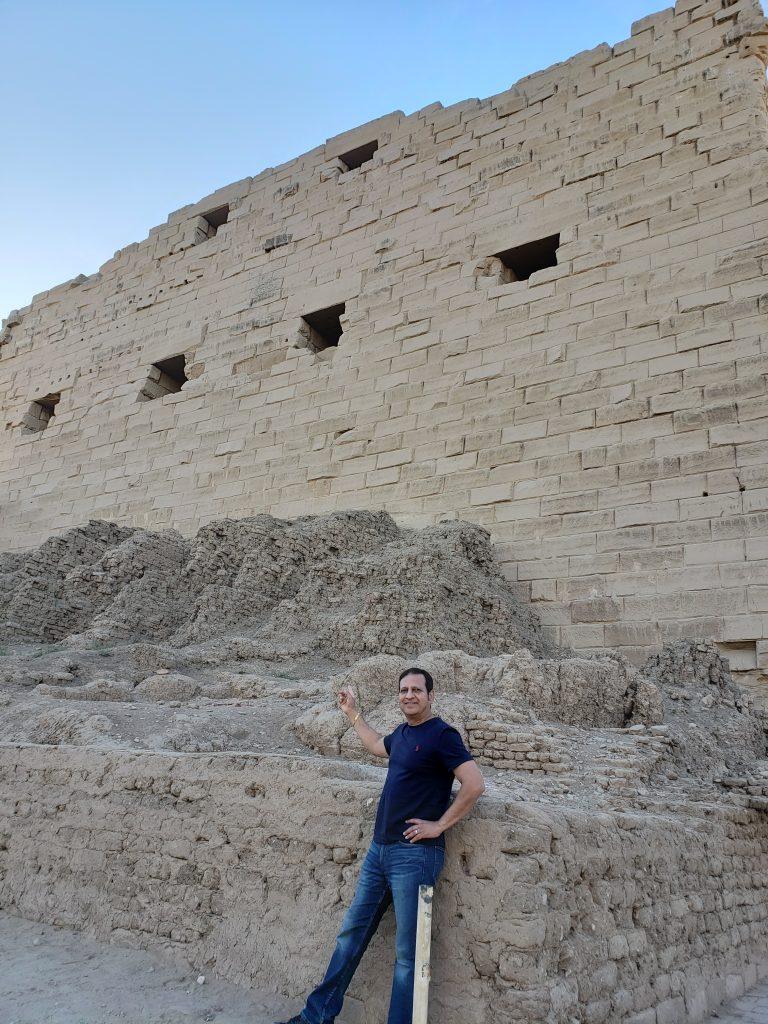
Late afternoon we left for Hurghada in our comfortable AC mini bus. Hotel Continental in Hurghada was located right on the waters of the Red Sea and was quite lavish. After dinner at the hotel (all inclusive) we went for a short walk on the waterfront but it was quite cold so took refuge in the glass walled late night cafe sipping free cappuccinos !!
Day 6 : Hurghada – Quad Tour : The Quad tour operator picked us up around 10.30 am and drove us to a place about 10 min in the desert to a Adventure sports Oasis. We had no idea what to expect and were plesantly surprised when the organiser told us the agenda for the day. First we would go on the Quad ATVs for a high speed ride in the desert followed by a unique opportunity to drive the desert buggy. Both the activities were very enjoyable as was the late lunch and the entertainment program that included belly dancing and Sufi dancing. By the time we came back to our hotel, we were ready to crash as we had early morning flights to take us back to Cairo.

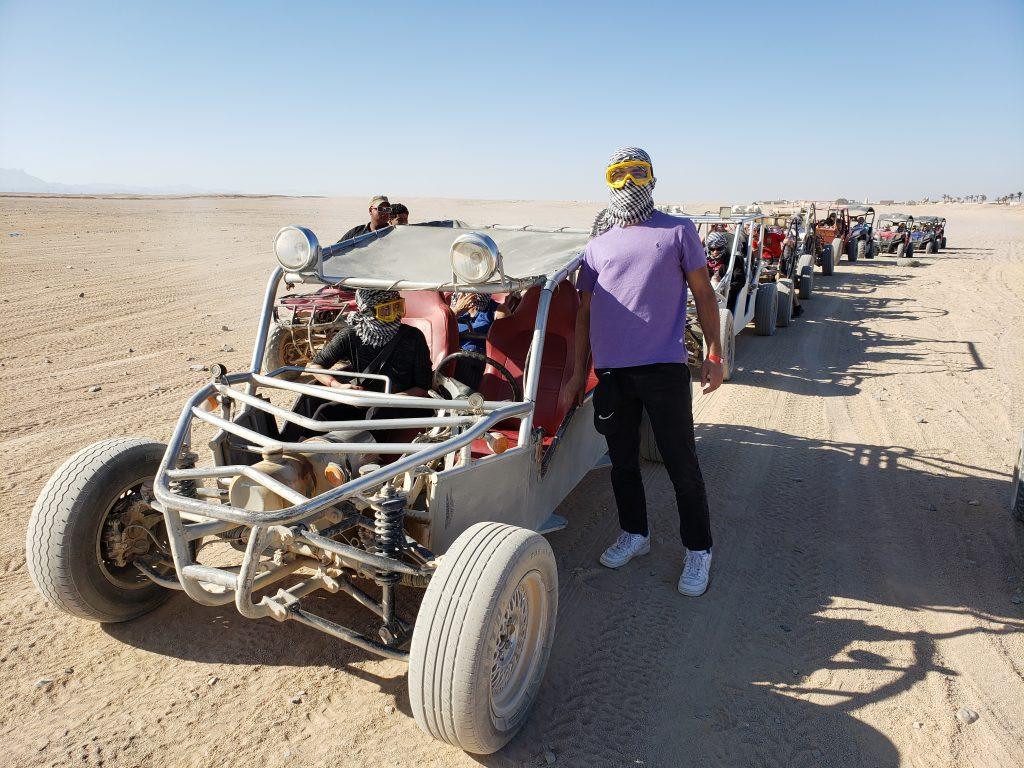
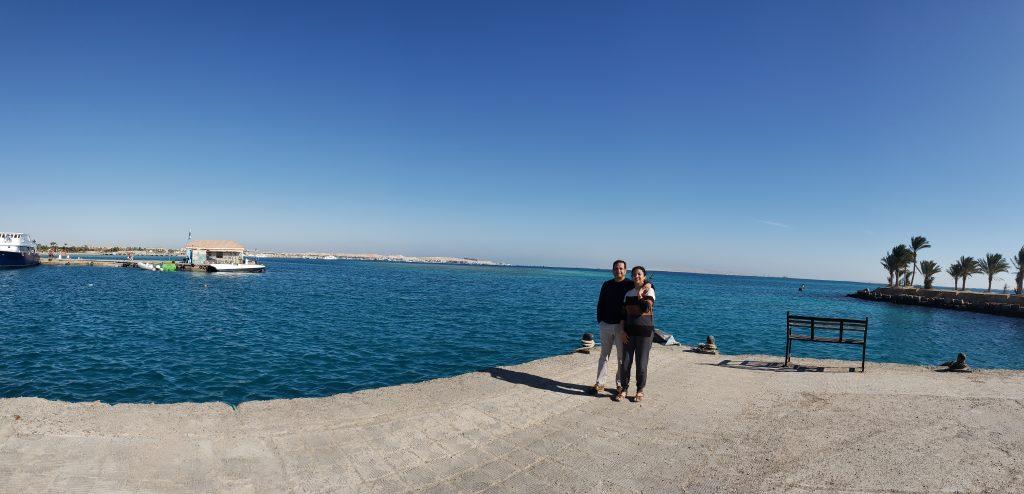
Day 7 & 8 : Cairo : Back in Cairo, we had 2 days to explore the Islamic history and architecture of the city. Some of the must see places i can recommend are :
- Egyptian museum – relics from the Pyramids, Tombs, especially from Tutankamen’s tomb
- the various mosques – Amr Ibn Alas Mosque, the oldest mosque built in Africa; Alabaster mosque, Sultan Hassan mosque
- Saladin’s citadel
- Hanging church
- Places the Holy family visited
- Ben Ezra Synagogue – Place where Moses was found (mythology)
- local restaurant to try Koshary, Egyptian fast food
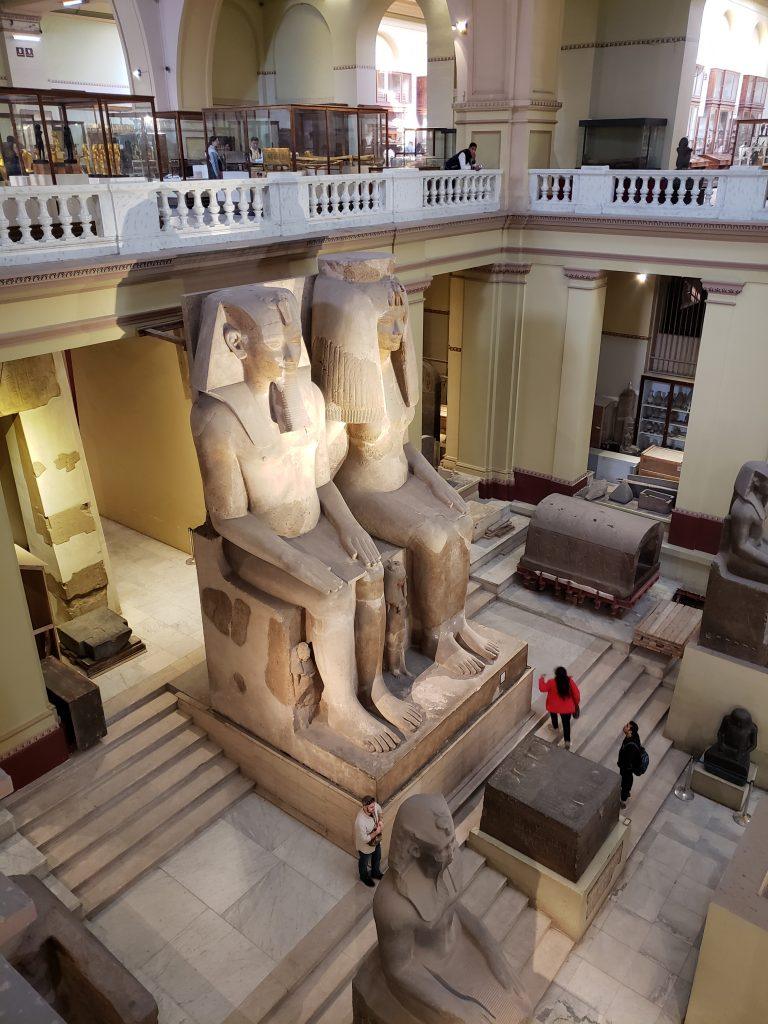
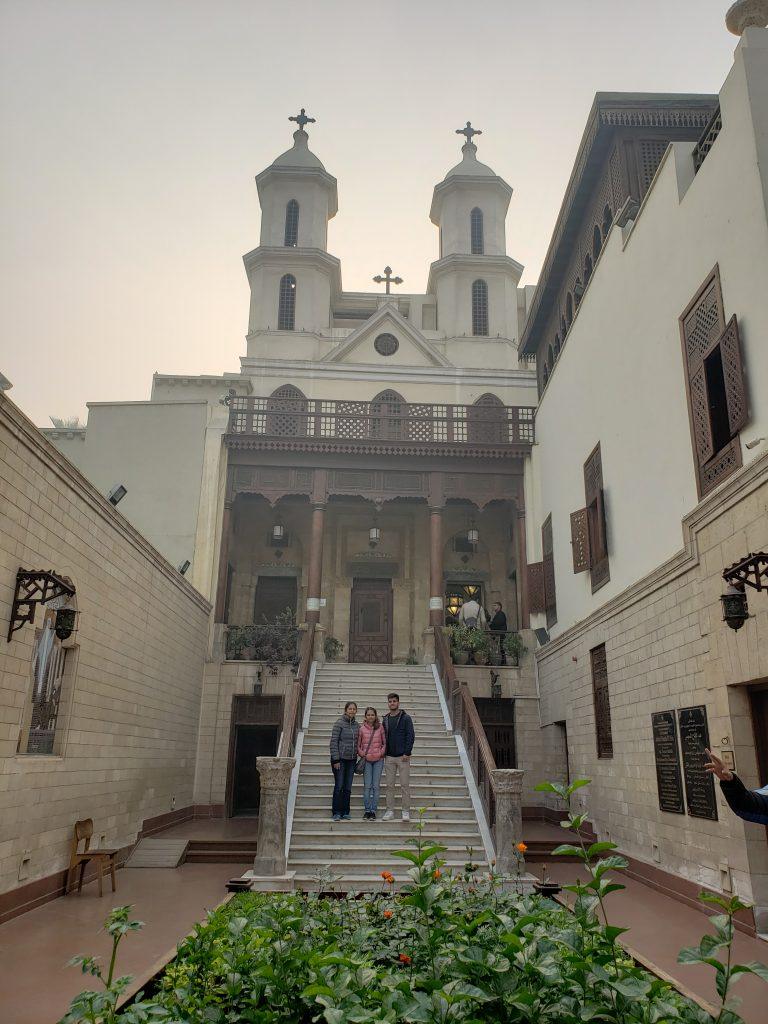
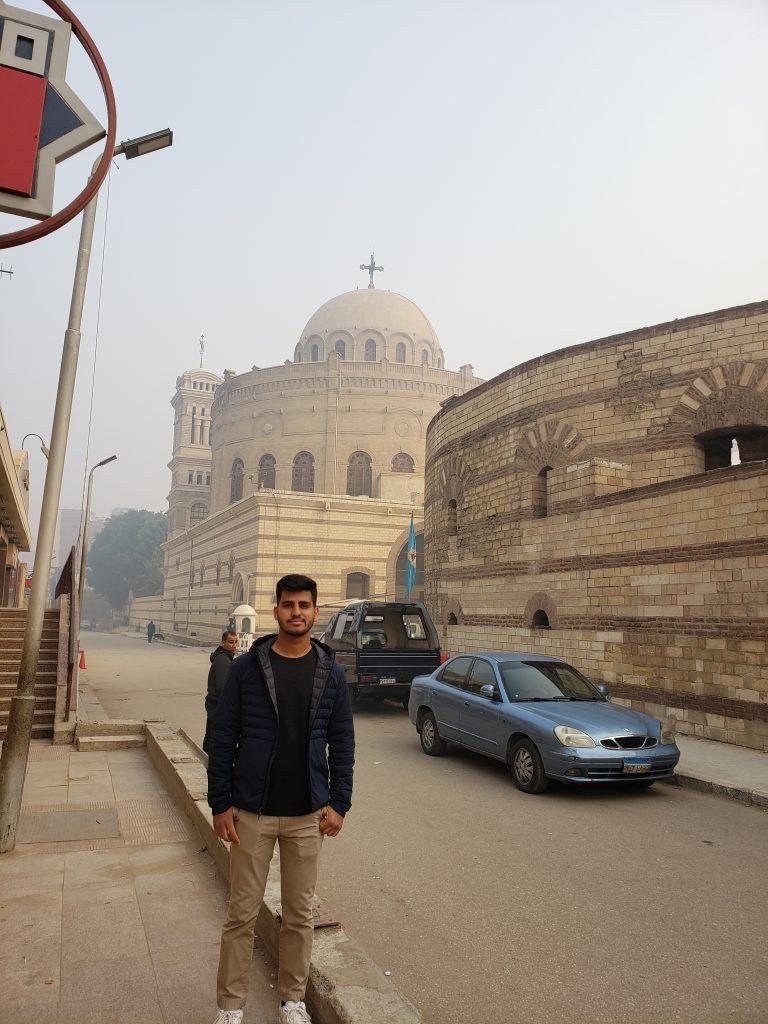
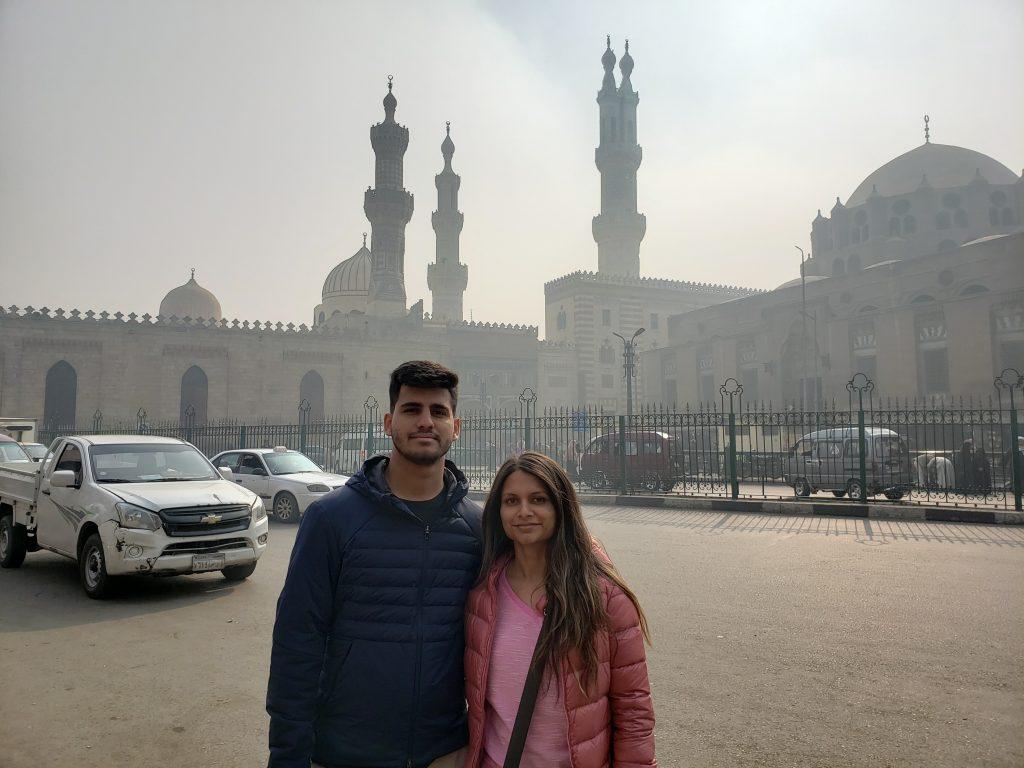
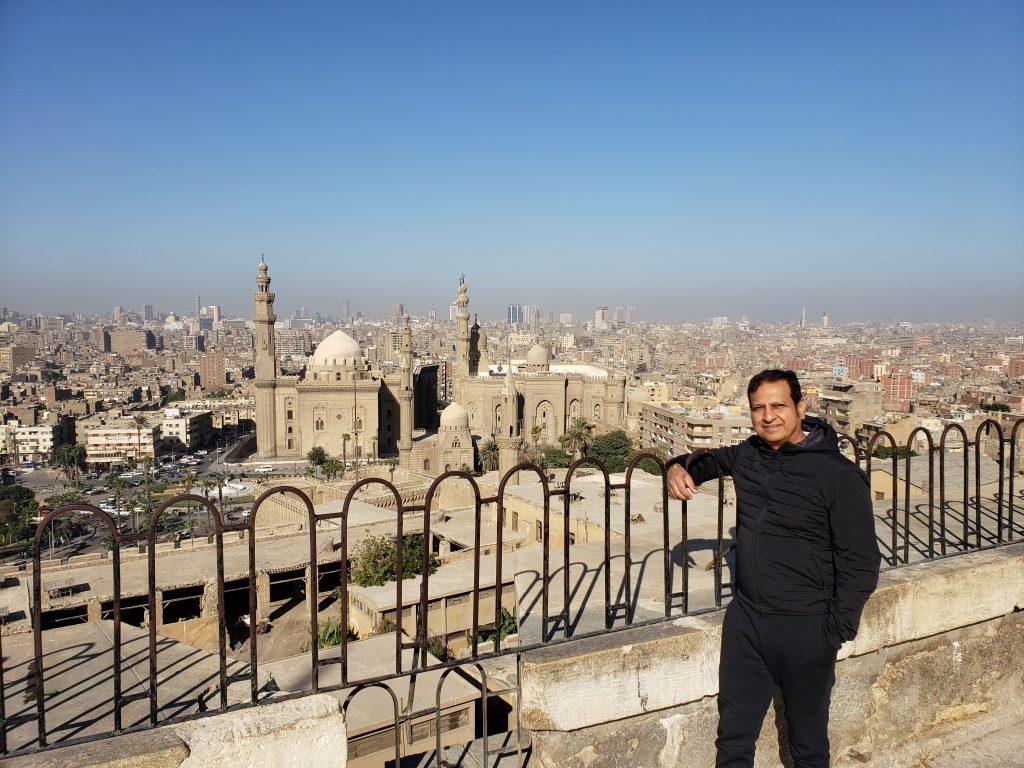
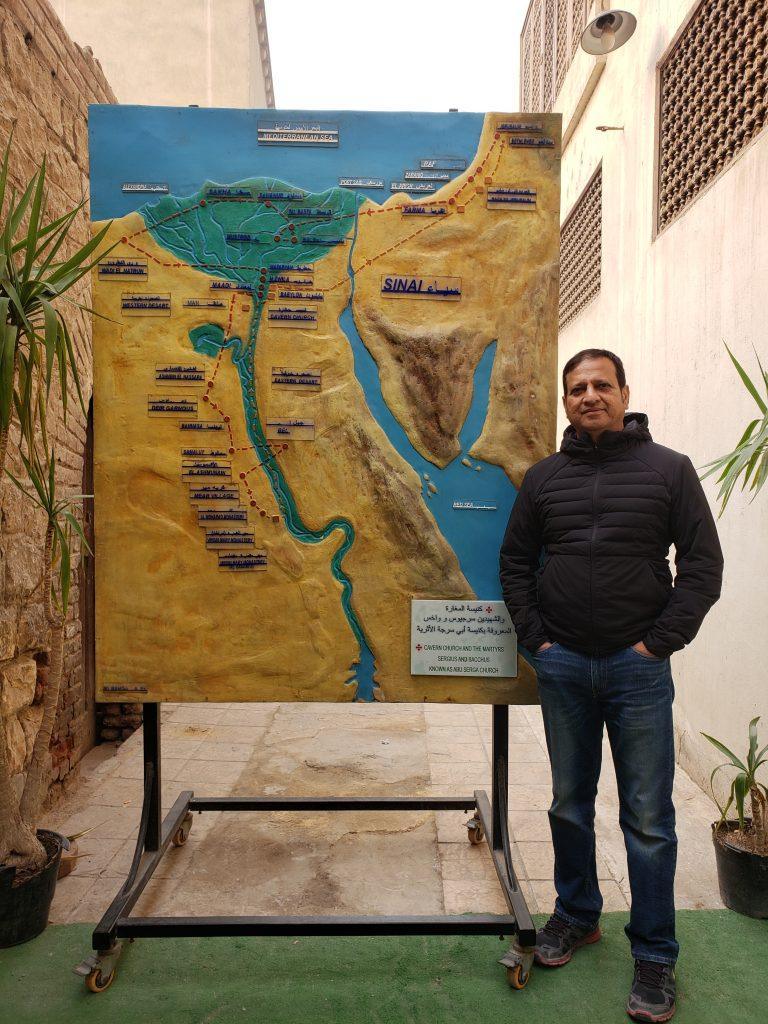
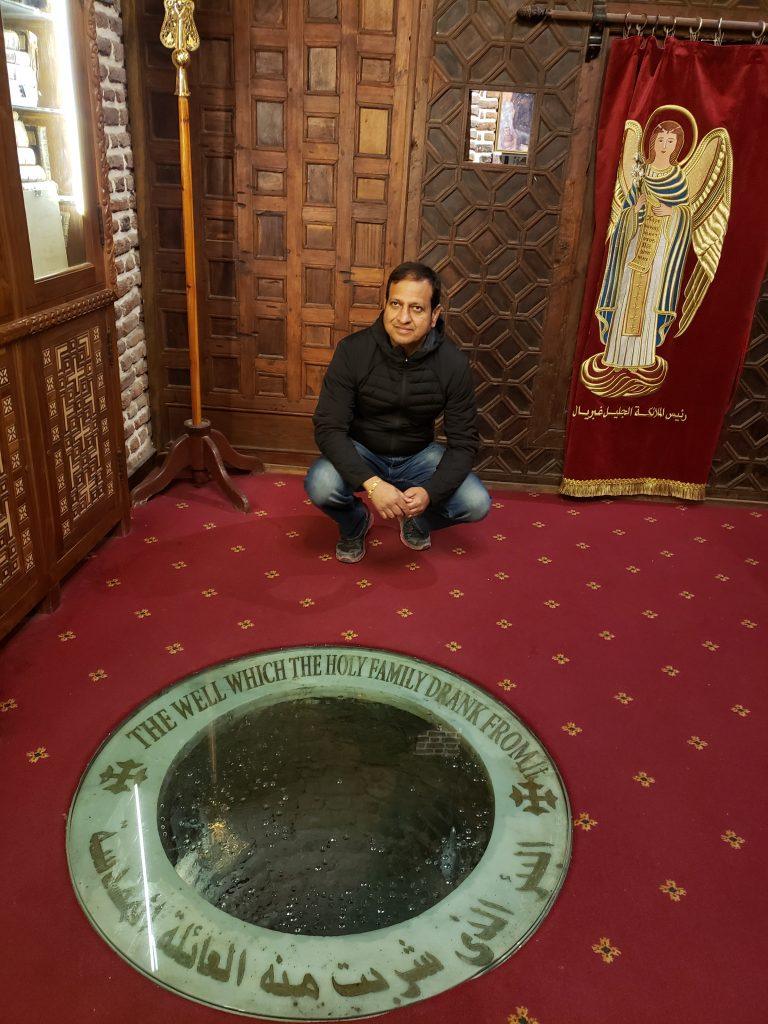
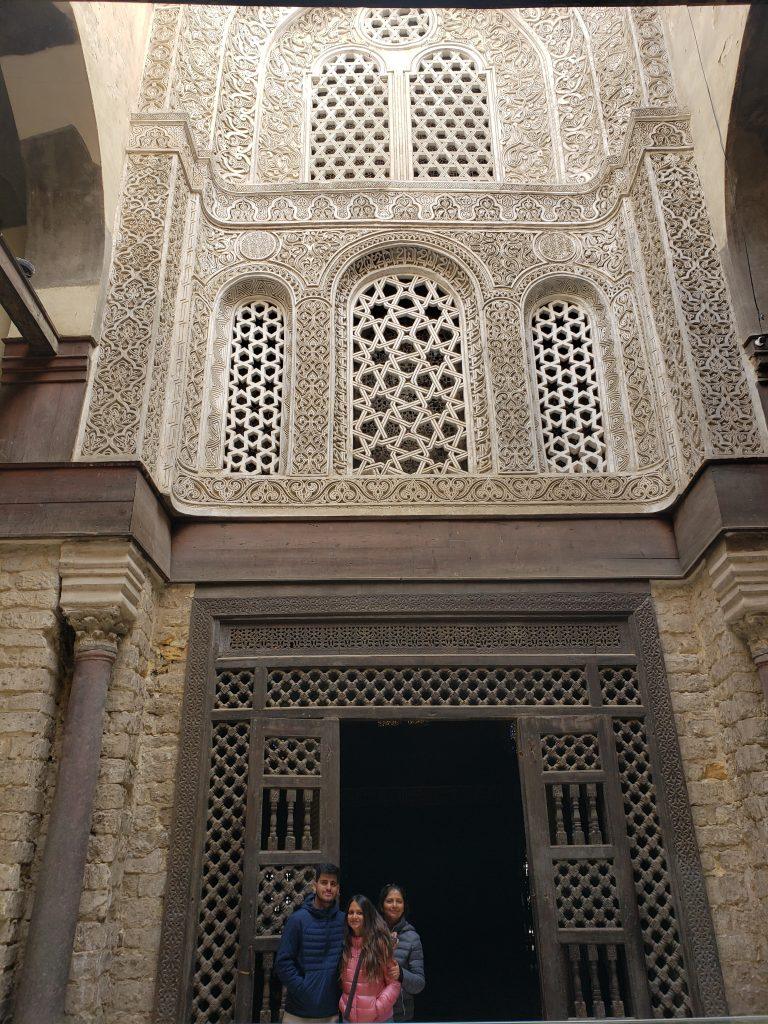
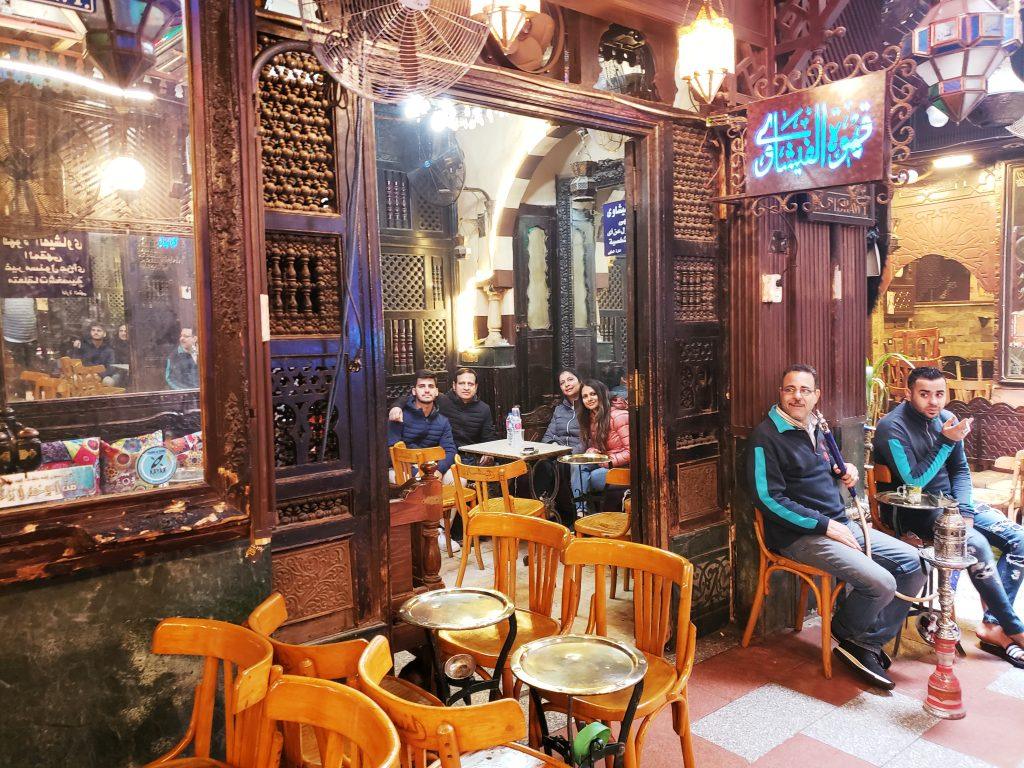
In 9 days we had covered almost all of Egypt, right from the City of Cairo and Pyramids in the north to the Temples and Tombs of Aswan, Edfu and Luxor in the south, the Red sea beach resort of Hurghada in the east; the Nile cruise, the shopping, the food, culture and adventure.
Hope you find this travelogue useful. I do not receive any commission from any of the persons or places that I mentioned in this article. I am only sharing my experiences and wrote what I felt would be useful to you in planning your trip to Egypt. I would love to get feedback from you, please write to me at RealtorShail@gmail.com





